Welcome to Hakodate, a charming port city located on the southern tip of Hokkaido, Japan’s northernmost island. With its stunning views, rich history, and vibrant food scene, Hakodate is a perfect destination for those looking to experience the best of Hokkaido’s unique culture. From breathtaking nightscapes on Mount Hakodate to morning strolls through the bustling Hakodate Morning Market, this city has plenty on tap.
source: Nomadic Samuel and That Backpacker via Samuel and Audrey YouTube channel

A City With A Distinct History
Hakodate is one of the first ports in Japan to open to international trade in the mid-19th century, and this historical significance is still evident throughout the city. You’ll find traces of its diverse past in the unique blend of Western and Japanese architecture, especially in the Motomachi district. Here, elegant churches and consulates stand alongside traditional Japanese buildings, creating a distinctive cultural landscape. The city’s historical roots are also reflected in the well-preserved Goryokaku Fort, a star-shaped fortress that offers a glimpse into Hakodate’s strategic military importance.

- Motomachi District: Explore this charming area filled with Western-style buildings and panoramic views of the harbor.
- Goryokaku Fort: Visit this iconic, star-shaped fort, now a beautiful park with a towering observation deck.
- Historical Churches: Discover Hakodate’s unique blend of faiths by visiting its historic churches, including the Russian Orthodox Church.
Tip: Head to the top of the Goryokaku Tower for a bird’s-eye view of the star-shaped fort and surrounding cityscape.

Stunning Views from Mount Hakodate
One of the highlights of any trip to Hakodate is the view from Mount Hakodate, which is considered one of the best night views in Japan. As the sun sets, the city lights up, and the shimmering lights below create a magical scene that has to be seen to be believed. During the day, you can enjoy a panoramic view of the entire city, surrounded by mountains and the sea. The ride up the mountain via cable car is an experience in itself, offering breathtaking vistas as you ascend.

- Night Views: Don’t miss the spectacular night view from the summit, often compared to a sparkling jewel box.
- Daytime Panoramas: Visit during the day for clear, sweeping views of the city, harbor, and surrounding landscape.
- Cable Car Ride: Take the scenic cable car to the top for a fun and convenient way to reach the summit.
Tip: Arrive early in the evening to secure a good spot at the observation deck, as it can get crowded during peak hours.
source: Nomadic Samuel and That Backpacker from Samuel and Audrey YT channel
Hakodate’s Food Scene: A Culinary Delight
Hakodate is renowned for its fresh seafood and vibrant culinary scene, making it a paradise for food lovers. Start your day with a visit to the Hakodate Morning Market, where you can sample some of the city’s most famous dishes, like fresh uni (sea urchin) and ika donburi (squid rice bowl). Don’t miss the chance to try Hakodate’s signature shio ramen, a salt-based noodle soup that’s lighter and clearer than its miso or soy-based counterparts. For dessert, indulge in some Hokkaido dairy treats, like soft-serve ice cream made from local milk, for a sweet end to your meal.
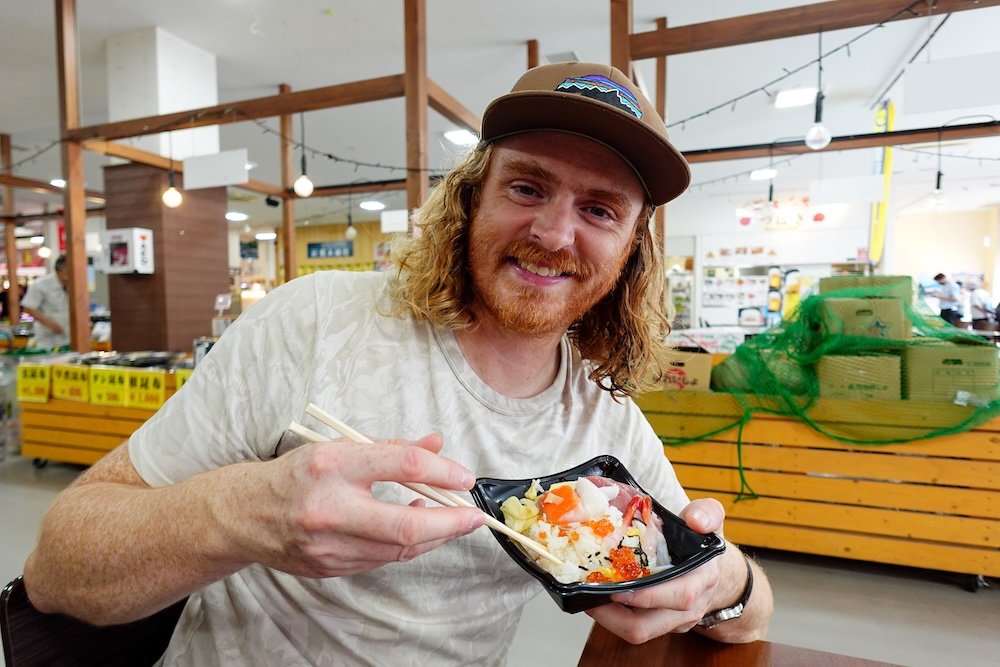
- Hakodate Morning Market: Explore over 250 stalls offering everything from seafood to local crafts, and enjoy a freshly prepared breakfast.
- Shio Ramen: Try Hakodate’s unique take on ramen, featuring a delicate, clear broth and fresh seafood toppings.
- Hokkaido Dairy: Treat yourself to soft-serve ice cream or cheese tarts made from rich, creamy Hokkaido milk.
Tip: Visit the market early in the morning for the best selection of seafood and to avoid the crowds.

Relaxing by the Waterfront
Hakodate’s picturesque waterfront is perfect for a leisurely stroll, offering a mix of historical charm and modern attractions. The Red Brick Warehouses, once bustling trade hubs, have been transformed into trendy shops, cafes, and galleries. It’s a great spot to pick up unique souvenirs or enjoy a relaxing afternoon by the water. Nearby, the Hakodate Beer Hall serves locally brewed craft beer, making it a perfect stop for a refreshing drink. As you explore, you’ll also come across the Kanemori Yokan, an old-fashioned sweet shop where you can sample traditional Japanese confections.
- Red Brick Warehouses: Wander through these beautifully preserved buildings, now home to chic boutiques and restaurants.
- Hakodate Beer Hall: Enjoy a glass of locally brewed beer with a view of the harbor, perfect for a laid-back afternoon.
- Kanemori Yokan: Sample traditional Japanese sweets and pick up a few unique treats to take home.
Tip: Visit the waterfront in the evening for a romantic atmosphere, as the area lights up beautifully after dark.
Ready to explore Hakodate? Pack your bags and get ready to experience a city that’s as welcoming as it is beautiful.
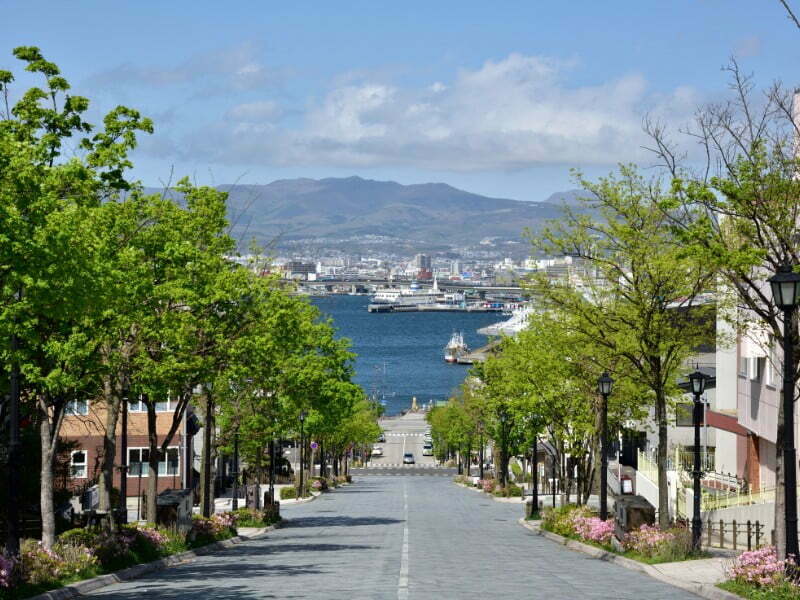
Hakodate City Guide: A Brief History Of Hakodate, Japan
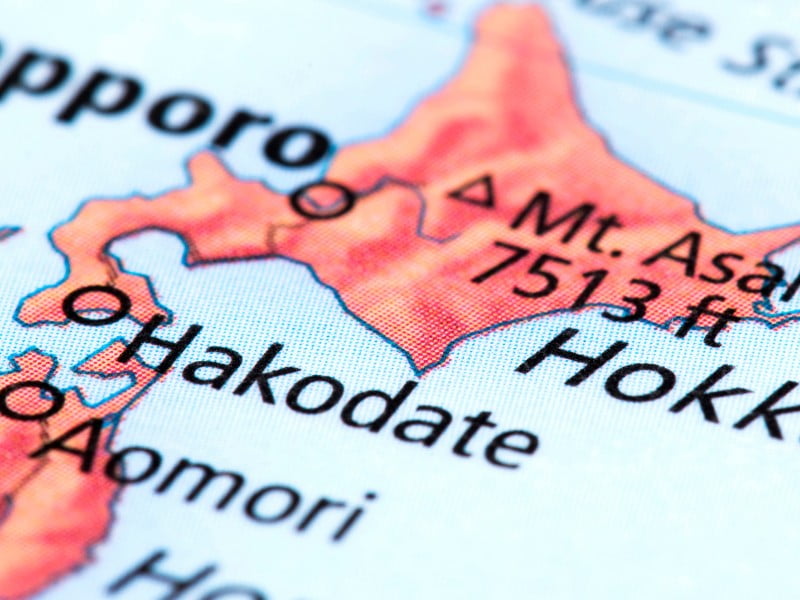
As one of the first Japanese ports to open to foreign trade in the mid-19th century, Hakodate became a gateway between Japan and the rest of the world. Here’s a look at some of the key moments in Hakodate’s past that have shaped the city into the vibrant destination it is today.

Opening of the Port: Gateway to the World
In 1854, Hakodate became one of the first ports in Japan to open to international trade following the Convention of Kanagawa. This historic agreement, signed between Japan and the United States, marked the end of Japan’s isolationist policy, known as sakoku, and opened Hakodate to foreign ships and influence. The city quickly developed into a bustling trade hub, welcoming merchants, sailors, and diplomats from around the world. This influx of different cultures and ideas significantly shaped Hakodate’s development, giving it a cosmopolitan feel that was rare in Japan at the time.
- Convention of Kanagawa: Signed in 1854, this treaty opened Hakodate and a few other ports to American and international trade.
- End of Isolation: The opening of Hakodate signaled the end of Japan’s 200-year period of isolation and the beginning of its modernization.
- Cultural Exchange: The port attracted people from various countries, leading to a unique blend of Western and Japanese influences in the city.
Tip: Visit the Hakodate Port Opening Memorial Hall to learn more about the city’s pivotal role in Japan’s modernization.
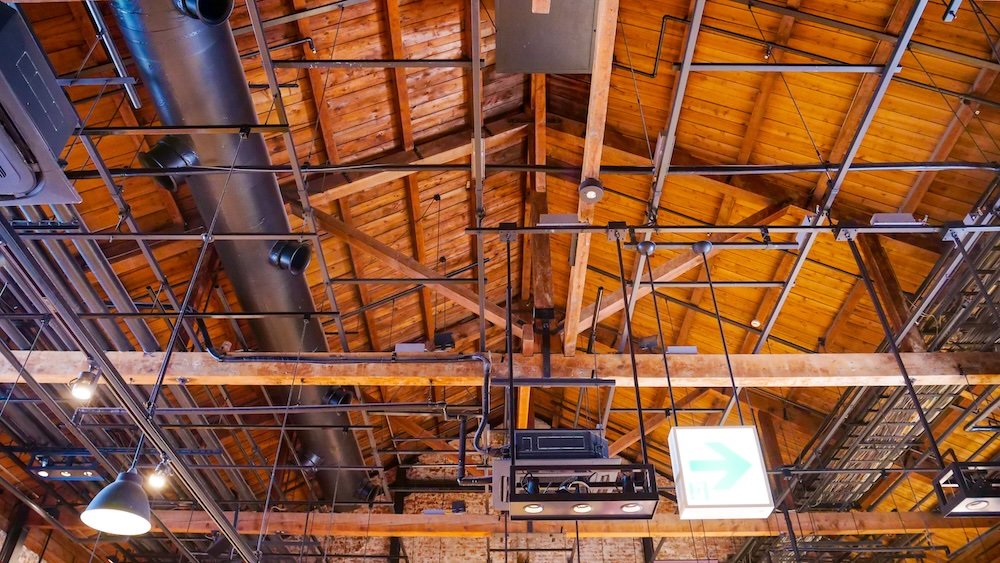
The Influence of Western Architecture
The arrival of foreign settlers in Hakodate brought a wave of Western architectural styles that still define parts of the city today. The Motomachi District is particularly famous for its historical buildings, including old consulates, churches, and residences that were built during the late 19th and early 20th centuries. These Western-style structures, set against the backdrop of Hakodate’s natural beauty, give the area a distinctive charm that’s unlike anywhere else in Japan. Strolling through this district feels like stepping back in time, offering a glimpse into the city’s diverse cultural heritage.
- Motomachi District: This historic neighborhood is home to beautiful Western-style buildings, including the Old British Consulate and the Russian Orthodox Church.
- Blending Cultures: The mix of Western and Japanese architecture reflects Hakodate’s unique position as a cultural crossroads.
- Photographic Spots: The district’s charming streets and stunning views make it a popular spot for photography enthusiasts.
Tip: Take a leisurely walk up to the Motomachi Park Observation Deck for panoramic views of the city and harbor, especially stunning at sunset.

Goryokaku Fort: A Symbol of Modernization
Built in the shape of a star, Goryokaku Fort is one of Hakodate’s most iconic historical sites and a symbol of Japan’s efforts to modernize its military defenses in the 19th century. Constructed in 1864 to protect against potential foreign attacks, the fort was the site of the final battle of the Boshin War, a civil war that led to the end of the Tokugawa shogunate and the restoration of imperial rule. Today, Goryokaku is a beautiful public park, particularly famous for its cherry blossoms in spring, offering a peaceful place to reflect on Hakodate’s turbulent history.
- Star-Shaped Design: Goryokaku’s unique star shape was influenced by Western military architecture, designed to minimize blind spots in defense.
- Boshin War: The fort was the scene of the last stand of the shogunate forces during this pivotal conflict in Japanese history.
- Cherry Blossom Spot: In spring, the park becomes a popular spot for hanami (cherry blossom viewing), attracting visitors from all over.
Tip: Climb the Goryokaku Tower for a bird’s-eye view of the fort’s star-shaped layout and the surrounding cityscape.

Hakodate’s Multicultural Heritage
Hakodate’s history of international trade and settlement has given it a unique multicultural heritage that’s still evident today. The city is home to a diverse range of cultural and religious landmarks, from Buddhist temples and Shinto shrines to Western-style churches and the Hakodate Orthodox Church. This mix of influences is also reflected in the city’s culinary scene, which offers a fusion of Japanese, Western, and even Russian flavors. Exploring Hakodate’s cultural sites provides a fascinating insight into how the city has embraced and integrated diverse traditions over the centuries.
- Hakodate Orthodox Church: One of the oldest Russian Orthodox churches in Japan, symbolizing the long-standing Russian presence in Hakodate.
- Old Public Hall of Hakodate Ward: This grand Western-style building, built in 1910, served as a symbol of the city’s openness to Western culture.
- Multicultural Cuisine: Enjoy a culinary journey through Hakodate’s diverse food offerings, from seafood to Western-inspired dishes.
Tip: Don’t miss the chance to visit the Motomachi Roman Catholic Church, a beautiful example of Gothic architecture set against the city’s historic backdrop.
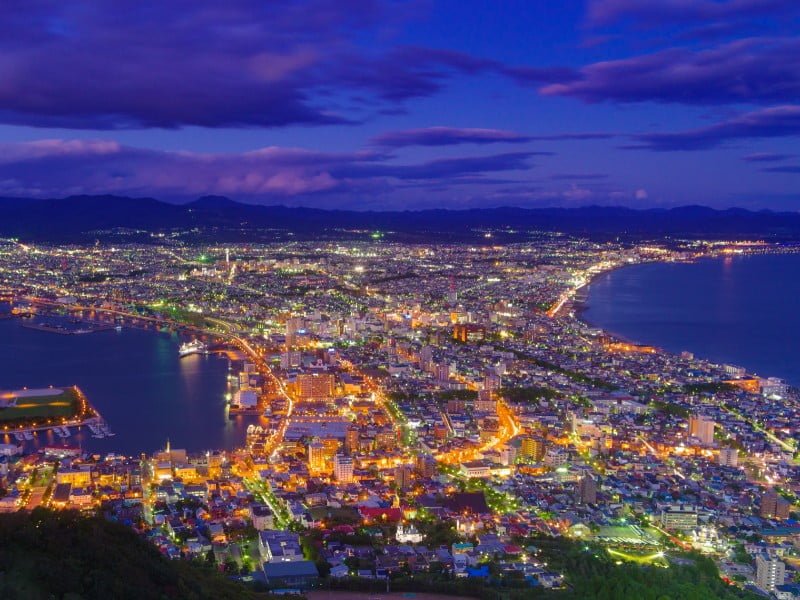
Hakodate Top Attractions and Best Places to Visit in Japan
Those entering Hokkaido via ferry will arrive at the historic city of Hakodate. Boasting a magnificent fortress, an attractive foreigner district, and great museums, it will prove to be a worthy introduction to this massive island.
Often throughout its history, Japan has closed itself off from the world. By the 19th century, though, they could not afford to ignore the massive growth and influence of Western powers. While Hakodate was one of a handful of cities they opened up to foreign traders, they also correctly realized this opened them up to an attack by the countries from which they were from.
To defend against this, the Japanese built Fort Goryokaku to guard the essential port city of Hakodate. Constructed in a classic star formation, it never was involved in a war against a foreign aggressor, but it did see action in a civil war, where the shogunate mounted a last-gasp offensive against the Meiji government by attempting to take this fortress.
By the early 20th century, it became obsolete from a military perspective, so it was converted into a public park. Come by if you here in early May, as it is usually at this time when the cherry trees planted here burst out into full blossom.
As mentioned previously, Hakodate has been open to the West since 1854. Soon after considerable numbers of foreigners began to move to the city, they took a liking to the district of Motomachi. In little time, they began to erect structures that reminded them of home, injecting some foreign flavour into this distinctly Japanese city.
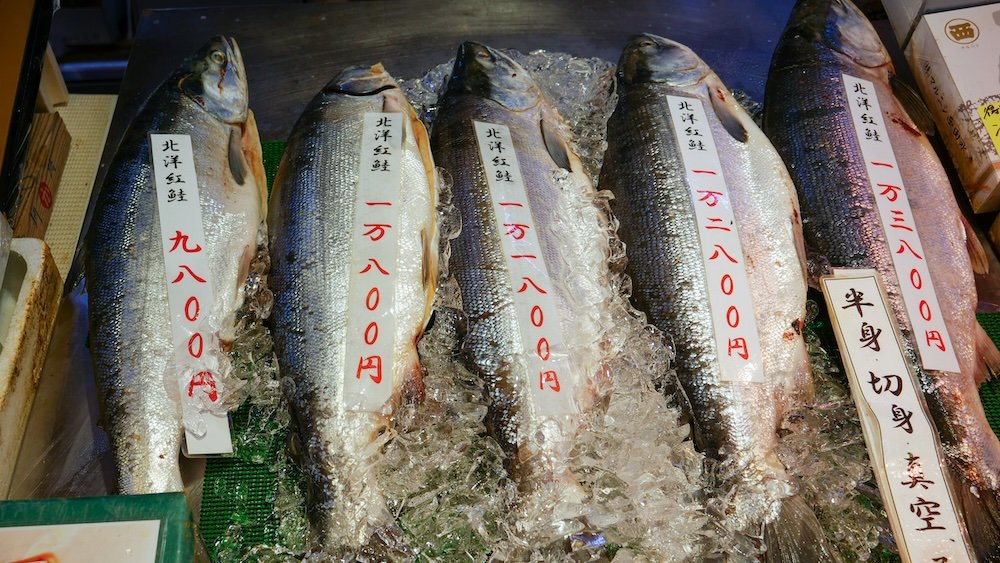
Other Attractions
As you stroll its streets, you’ll find signs of British, Chinese, and Russian residency, among other countries. As you climb higher up the hill in this neighbourhood, be sure to look back and take in the view of Hakodate Bay, as it is particularly majestic on a clear day.
While you are still in Motomachi, fans of architecture will want to make room in their schedule to stop by the Old Public Hall of Hakodate Ward. A prime example of the European influence that swept this city soon after its opening to foreign traders and dignitaries, it has long been a residence of choice for members of the Japanese Royal Family whenever they visit the city of Hakodate.
Check with tourism officials to see if musical events are on the schedule during your visit, as the main hall of this building often hosts concerts by artists from across the country and around the world. Also, the balcony offers excellent views of the foreign quarter of Hakodate, so make sure you get a few shots from it as you wander around this grand building.
Finally, make sure to take a second to visit Hakodate Orthodox Church before leaving Motomachi to visit other parts of Hakodate. Built in 1859, it was constructed in tandem with the establishment of the Russian Consulate, as Orthodox Christianity was the state religion at the time.
Designed in the Russian Byzantine style (aka the typical onion bulb domes many associate with Russian churches), it is known by locals as the ‘ding dong temple’ due to the clarity of the church bells which ring out to announce the imminent start of mass.

Other Cultural Attractions: Trip to Hakodate, Japan
Those wanting to witness authentic street life in this city will want to set their alarms early so they can get up in time to check out the Hakodate Morning Market. Opening its doors at 5 am (6 am in winter), you’ll get to see a dizzying array of seafood hauled in fresh from the ocean, along with fresh produce in season.
Nearby, there are numerous restaurants that draw on this reliable supply of excellent seafood to produce excellent cuisine – stop by after your market tour to have one of the better breakfasts you have had in your life.
Learn more about the indigenous tribes which called Hokkaido home before the arrival of the Japanese at the Hakodate Museum of Northern Peoples. While its collection is a bit on the small side, its low admission fee and the opportunity to learn about this resourceful First Nations tribe will add an element of enrichment to your Hokkaido holiday that you may not have expected.

More Attractions
As mentioned above, the opening of Hakodate to foreigners opened the door to different religions as well. The enduring legacy of this decision can be seen in the present day by visiting the Trappistine Monastery.
A peaceful compound featuring buildings built in the Gothic and Romanesque styles, you will feel like you have walked through a portal straight to Europe. Indeed, the only reminder you are in Japan will be the Japanese nuns you will get to meet during your visit. Be sure to try their ice cream, as it gets rave reviews from local and travellers alike!
Before moving on to your next destination in Hokkaido, head up to the top of Mount Hakodate via tram. The views of the city below are spectacular, especially at night. Those feeling a bit peckish will have a cafeteria-style restaurant at their disposal – while it is not five-star fare, it will pair perfectly with your time here.

22 Things To Do in Hakodate, Japan For Visitors
From riding the charming trams to exploring the vibrant markets and scenic viewpoints, there’s plenty of things to do in this captivating city. Here’s a list of must-see attractions and activities to make the most of your time in Hakodate.

1. Historic Trams 2 and 5
Riding Hakodate’s historic Trams 2 and 5 is not just a convenient way to get around; it’s a journey back in time. These trams have been an iconic part of the city’s public transport since the early 20th century. They take you through the heart of Hakodate, passing by key attractions like the Hakodate Morning Market and the Kanemori Red Brick Warehouse. The trams’ vintage interiors, with wooden seats and old-fashioned charm, make the ride a nostalgic experience that’s perfect for sightseeing.
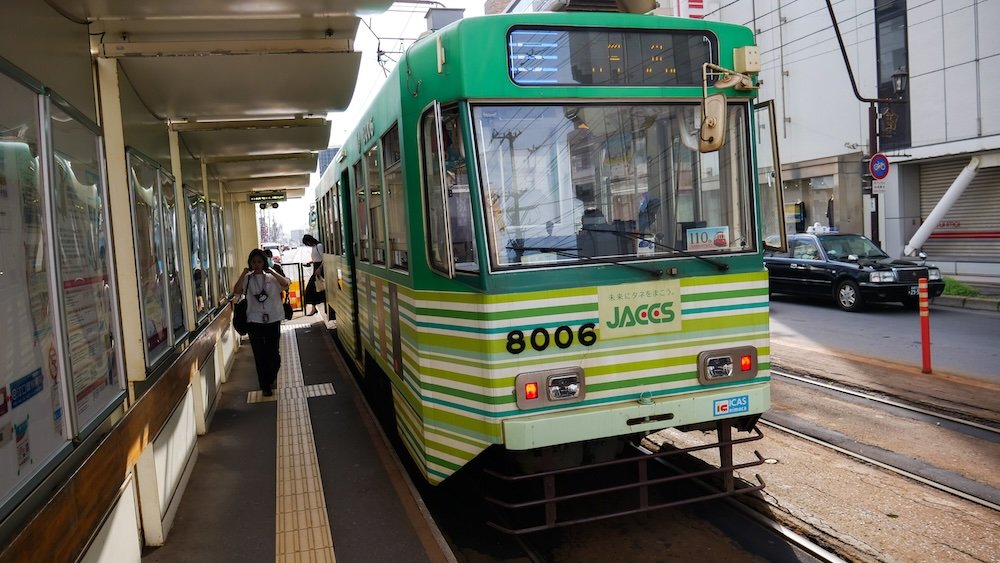
- Vintage Charm: Enjoy the classic wooden interiors and old-world atmosphere as you travel through the city.
- Scenic Route: The trams offer a great way to see Hakodate’s key sights, including the harbor and historical districts.
- Affordable Transport: A cost-effective way to explore the city, with convenient stops near major attractions.
Tip: Purchase a one-day tram pass for unlimited rides, making it easy to hop on and off as you explore.

2. Hakodate Morning Market
Start your day at the bustling Hakodate Morning Market, where you can sample some of the freshest seafood Hokkaido has to offer. The market is famous for its variety of seafood, including uni (sea urchin), crab, and squid. For a true taste of Hakodate, try the kaisen-don, a bowl of rice topped with an assortment of fresh sashimi. The market is also a great place to pick up local produce and souvenirs, from handmade crafts to delicious snacks.

- Fresh Seafood: Indulge in the freshest catches of the day, prepared right in front of you.
- Kaisen-don: Savor this local specialty, featuring a generous serving of assorted sashimi over rice.
- Local Goods: Browse the market for unique local products, including fresh produce and specialty foods.
Tip: Arrive early to enjoy the market at its liveliest and get the best selection of seafood.

3. Museum Ship Mashu Maru
Step aboard the Museum Ship Mashu Maru to explore Hakodate’s maritime history. This retired ferry, which once connected Hakodate with Aomori, now serves as a floating museum. Inside, you’ll find exhibits detailing the ship’s history, life on board, and the challenges of navigating Hokkaido’s icy waters. You can even visit the captain’s quarters and the bridge for an authentic look at how the ship operated during its active years.

- Historic Ship: Learn about the Mashu Maru’s role in connecting Hokkaido with Honshu before the Seikan Tunnel was built.
- Interactive Exhibits: Explore the ship’s interior, including the engine room and passenger cabins.
- Beautiful Views: Enjoy stunning views of the harbor and city skyline from the deck.
Tip: Visit the museum in the late afternoon for a picturesque view of the sunset over the harbor.

4. Kanemori Red Brick Warehouse
The Kanemori Red Brick Warehouse is a historic complex that has been transformed into a lively shopping and dining destination. Once used as a storehouse for goods traded through the port, the warehouses now house a variety of boutiques, cafes, and restaurants. Stroll through the charming red-brick buildings, browse local crafts and souvenirs, or enjoy a meal with views of the waterfront. The festive lights that illuminate the area in the evening add a magical atmosphere, making it a perfect spot for a romantic night out.

- Unique Shopping: Find everything from handcrafted goods to quirky souvenirs in the boutique stores.
- Waterfront Dining: Enjoy local cuisine with a view of the harbor at one of the many restaurants and cafes.
- Evening Lights: Experience the beautiful illumination of the warehouses in the evening, creating a romantic ambiance.
Tip: Try the locally brewed Hakodate beer at the Kanemori Beer Hall, a great way to unwind after a day of exploring.

5. Hachiman Zaka Slope
A visit to Hakodate wouldn’t be complete without walking up Hachiman Zaka Slope, one of the city’s most iconic viewpoints. The steep street, lined with trees, offers a stunning perspective down to the harbor and beyond. It’s especially beautiful in autumn when the leaves turn vibrant shades of red and gold. At the top of the slope, you can enjoy panoramic views of the city and bay, making it a popular spot for photography and leisurely strolls.
- Scenic Walk: Enjoy a leisurely walk up this picturesque slope with breathtaking views at every step.
- Perfect Photo Op: Capture stunning photos of the slope, framed by trees and leading down to the sparkling bay.
- Seasonal Beauty: The view changes with the seasons, from cherry blossoms in spring to vibrant foliage in autumn.
Tip: Visit early in the morning or late in the afternoon for the best light and fewer crowds.

6. Motomachi District & Churches
Hakodate’s Motomachi District is a captivating area filled with Western-style buildings and historic churches, reflecting the city’s international past. Wander through this charming neighborhood to see landmarks like the Hakodate Orthodox Church, the Motomachi Roman Catholic Church, and the Hakodate St. John Church. Each of these architectural gems tells a story of the city’s rich cultural heritage and the diverse communities that have called Hakodate home. The area’s hilly terrain and cobblestone streets add to its old-world charm, making it a delightful place to explore on foot.

- Hakodate Orthodox Church: Admire the striking onion domes of this beautiful church, a symbol of Russian influence in the city.
- Motomachi Roman Catholic Church: Visit this elegant church, with its distinctive Gothic architecture and peaceful interior.
- Hakodate St. John Church: Discover this charming wooden church, known for its simple, yet elegant design.
Tip: Head to Motomachi Park for panoramic views of the district’s historic buildings and the harbor beyond.
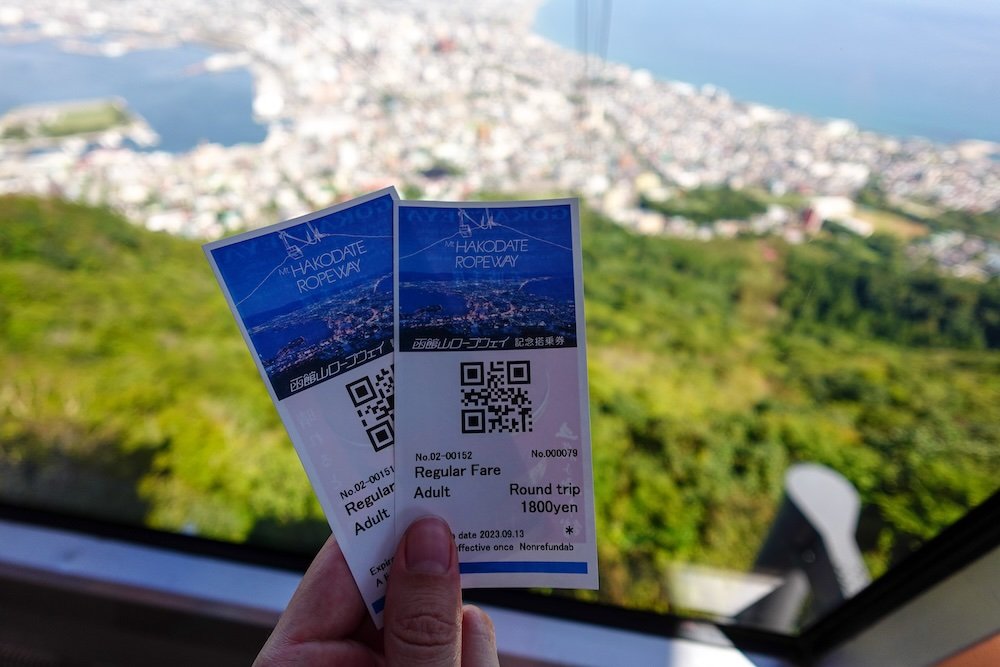
7. Mt. Hakodate Ropeway
For one of the best views in Japan, take the Mt. Hakodate Ropeway to the summit of Mount Hakodate. The cable car ride itself is a thrilling experience, offering stunning vistas as you ascend. Once at the top, you’ll be treated to a breathtaking panoramic view of the city and the surrounding seas. The night view from Mount Hakodate is particularly famous, often described as a “million-dollar view” due to the dazzling display of lights stretching out below.
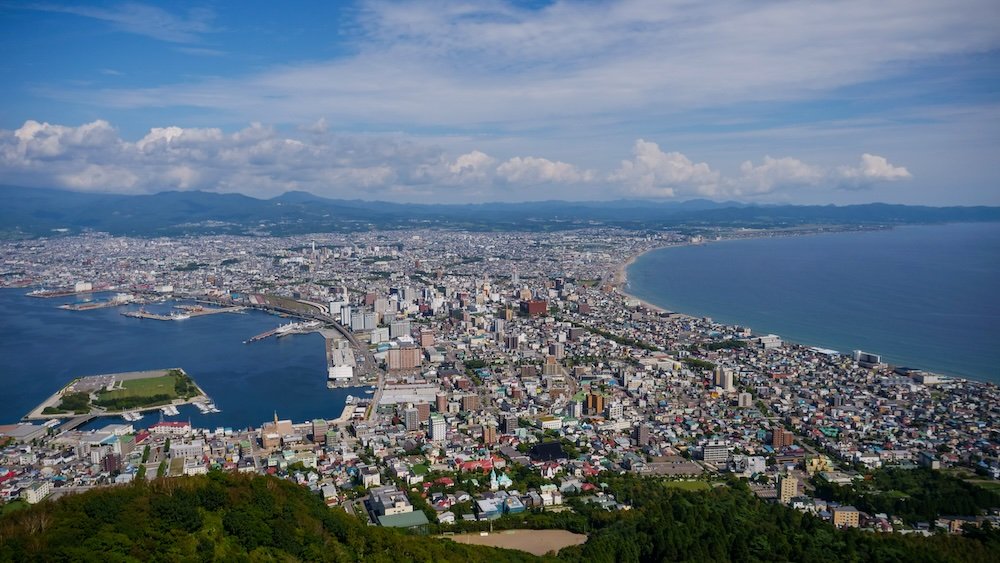
- Cable Car Ride: Enjoy a scenic journey up the mountain, with stunning views of the city and coastline.
- Panoramic Views: Take in the breathtaking views from the summit, especially beautiful at sunset and night.
- Café & Souvenirs: Relax at the café and pick up unique souvenirs at the summit shop.
Tip: Arrive about an hour before sunset to watch the city transition from day to night—an unforgettable experience.
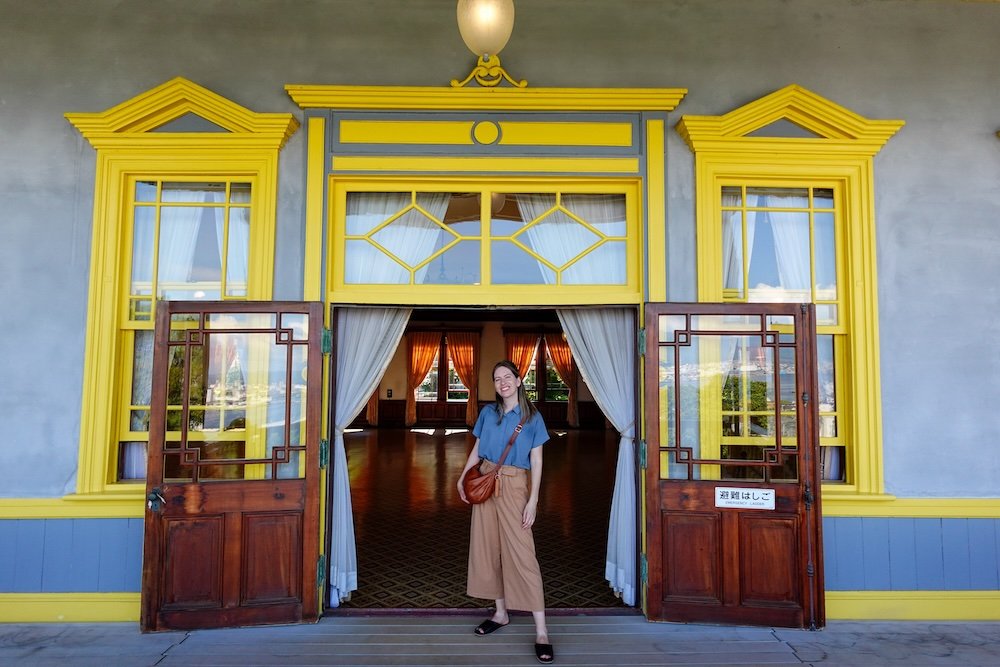
8. Old Public Hall of Hakodate Ward
The Old Public Hall of Hakodate Ward is a beautifully restored Western-style building that served as a community center in the early 20th century. Its grand exterior, complete with a stately balcony, is a striking example of colonial architecture. Inside, you’ll find elegant rooms decorated with period furnishings, offering a glimpse into Hakodate’s past. The hall is also used for concerts and events, making it a vibrant part of the city’s cultural scene.
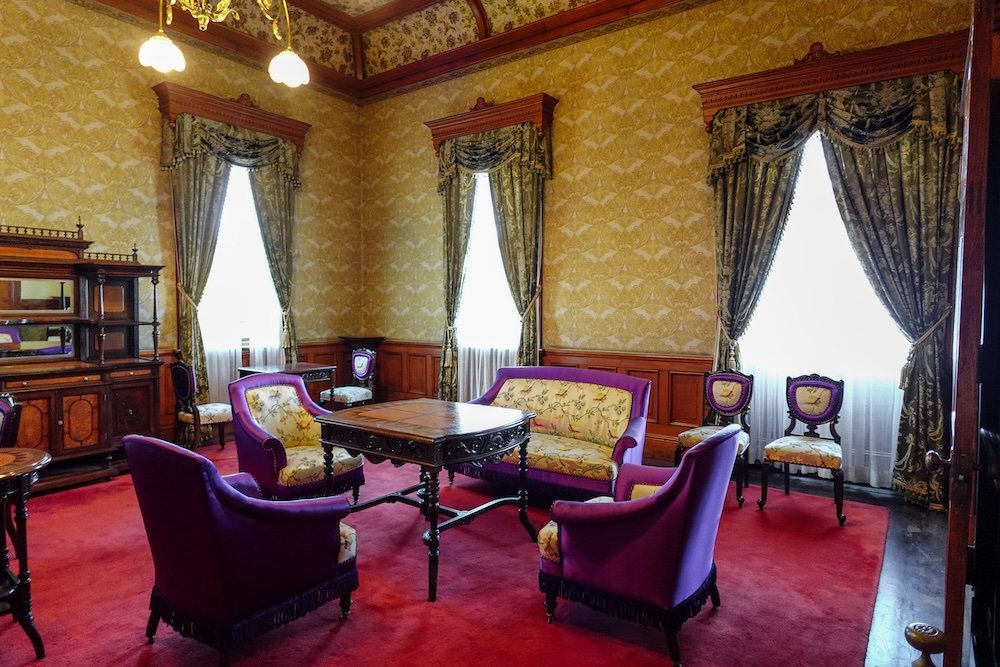
- Architectural Beauty: Admire the stunning architecture, with its blend of Japanese and Western design elements.
- Historical Exhibits: Explore the elegant rooms filled with antique furniture and historical artifacts.
- Cultural Events: Check out the schedule for concerts and cultural events held in this historic venue.
Tip: Visit the second-floor balcony for sweeping views of the Motomachi district and the harbor.
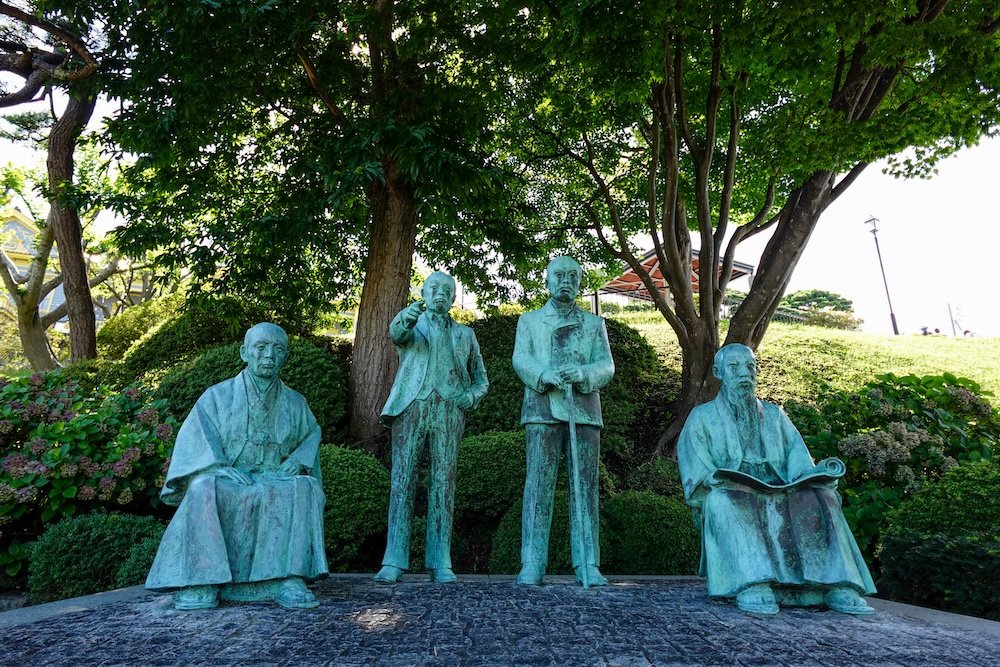
9. Motomachi Park
Motomachi Park is a peaceful green space nestled in the heart of the historic Motomachi District. It’s a lovely spot to take a break from sightseeing, with shaded paths, benches, and flower gardens. The park is also home to the Former British Consulate, now a museum and tearoom where you can enjoy a traditional afternoon tea. With its tranquil atmosphere and stunning views of the city and bay, Motomachi Park is a perfect place to relax and soak in the beauty of Hakodate.
- Scenic Views: Enjoy panoramic views of the harbor and city from various points within the park.
- British Consulate: Visit this historical building, now a museum showcasing Hakodate’s international history.
- Peaceful Retreat: Take a leisurely stroll through the gardens or relax on a bench with a good book.
Tip: Bring a picnic to enjoy in the park’s peaceful surroundings, especially during the cherry blossom season.

10. Hakodate City Museum of Northern Peoples
Discover the rich cultural heritage of Hokkaido’s indigenous peoples at the Hakodate City Museum of Northern Peoples. This museum offers fascinating insights into the history, traditions, and daily life of the Ainu and other northern cultures. Exhibits include traditional clothing, tools, and crafts, as well as displays on the natural environment of Hokkaido. It’s an enlightening experience that provides a deeper understanding of the region’s diverse cultural tapestry.
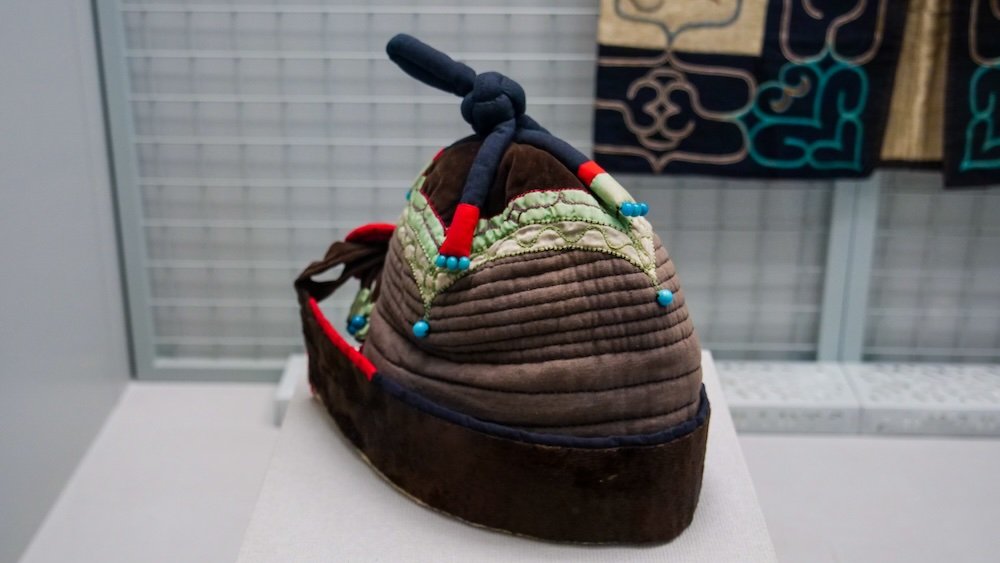
- Cultural Artifacts: Explore a diverse collection of artifacts, including traditional Ainu clothing and tools.
- Interactive Exhibits: Learn about the daily life and spiritual practices of the northern peoples through engaging displays.
- Educational Programs: Participate in workshops and programs that offer hands-on experiences with traditional crafts and music.
Tip: Check out the museum’s schedule for special exhibitions and events that delve deeper into the unique heritage of northern Japan.

11. Hakodate Salt Ramen
A trip to Hakodate wouldn’t be complete without trying its famous Hakodate Salt Ramen. Known for its clear, salty broth, this local specialty is a lighter alternative to the heavier miso and tonkotsu ramen varieties. The broth, made with chicken and pork bones, is delicately seasoned and often topped with slices of tender pork, bamboo shoots, and a sprinkle of chopped green onions. It’s a comforting bowl of goodness that’s perfect for warming up on a cool day.

- Light and Flavorful: Enjoy the delicate, clear broth that perfectly complements the tender noodles and toppings.
- Local Favorite: This ramen style is unique to Hakodate, making it a must-try dish for food lovers.
- Variety of Toppings: Try different versions with additional toppings like seafood, vegetables, or a boiled egg.
Tip: Pair your ramen with a side of gyoza (Japanese dumplings) for a complete and satisfying meal.

12. Hakodate-shi Hokuyo Museum
The Hakodate-shi Hokuyo Museum offers a fascinating look into the history of Hakodate’s maritime industry and the challenges faced by sailors navigating the often treacherous waters around Hokkaido. The museum features exhibits on shipbuilding, navigation, and the lives of seafarers, as well as models of historic ships. It’s a must-visit for those interested in maritime history and the development of Hakodate as a key port city.
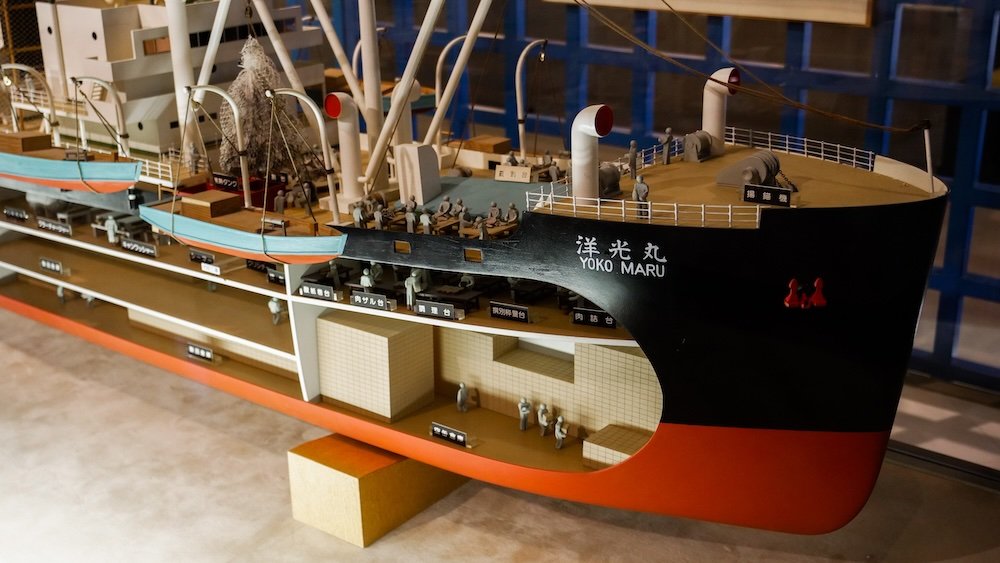
- Maritime Exhibits: Learn about the evolution of shipbuilding and navigation in Hakodate.
- Historical Models: View detailed models of historic ships and explore their design and significance.
- Interactive Displays: Engage with interactive exhibits that provide a hands-on understanding of maritime life.
Tip: Don’t miss the museum’s collection of vintage maritime equipment, which offers a unique glimpse into the tools of the trade.
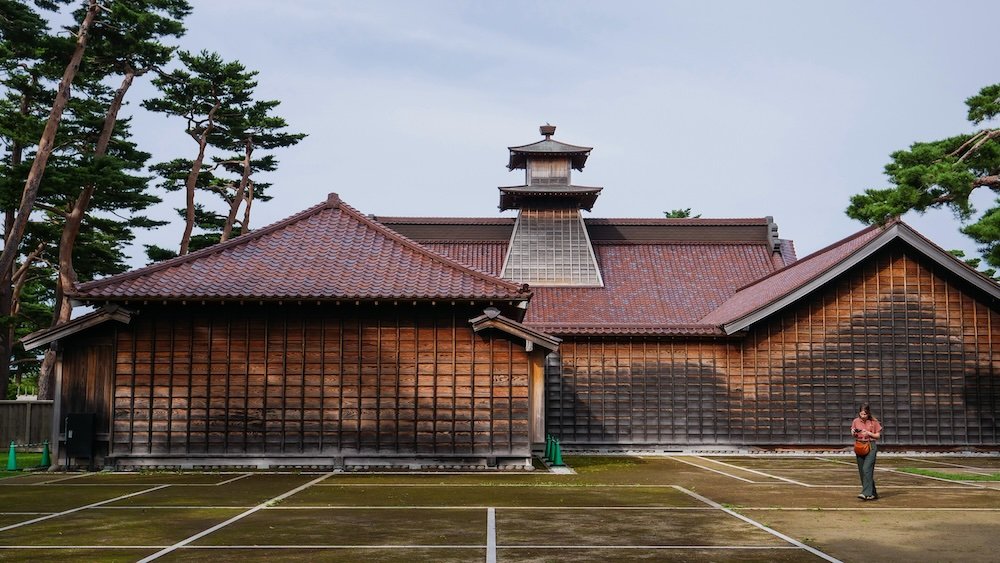
13. Goryokaku Park
Goryokaku Park is a stunning star-shaped park that was once the site of a fort built in the late Edo period. Today, it’s a popular spot for hanami (cherry blossom viewing) in spring, when over 1,000 cherry trees bloom around the moat. The park is not only a beautiful place to relax but also a historical landmark, offering insight into Japan’s turbulent transition from the shogunate to the Meiji Restoration. Stroll along the shaded paths, visit the historic fort ruins, and enjoy the tranquil atmosphere of this unique park.
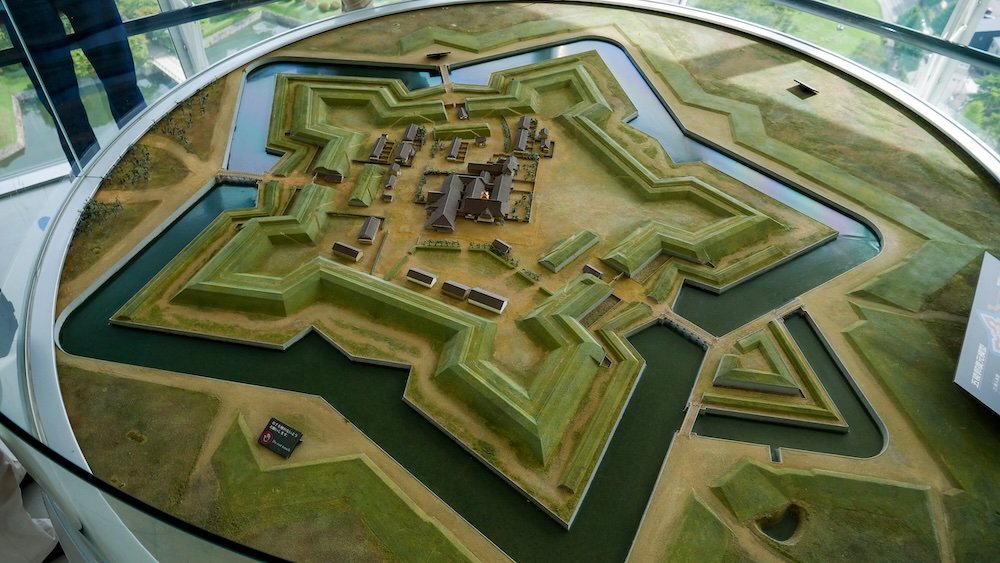
- Star-Shaped Fort: Walk around the star-shaped grounds of the former fort, now transformed into a scenic public park.
- Cherry Blossoms: Visit in spring to see the park’s cherry trees in full bloom—a truly magical sight.
- Historical Significance: Learn about the role of Goryokaku in the Boshin War and its importance in Japanese history.
Tip: Rent a rowboat and paddle along the park’s moat for a unique perspective of the cherry blossoms and fort.
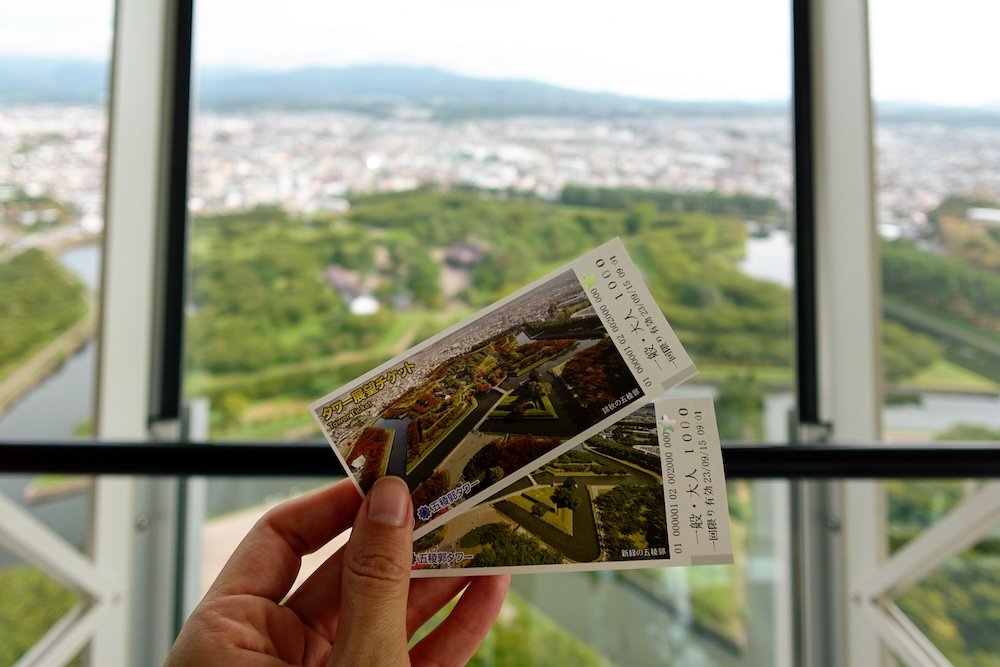
14. Goryokaku Tower
For a bird’s-eye view of Goryokaku Park and the city beyond, head up to the Goryokaku Tower. This 107-meter-high observation tower offers stunning 360-degree views of the star-shaped fort, Hakodate cityscape, and even Mount Hakodate in the distance. The tower’s observation decks are equipped with informative displays that explain the history of Goryokaku and its role in Japan’s modernization. It’s a perfect spot to gain a new perspective on Hakodate and appreciate the city’s unique layout.

- Panoramic Views: Enjoy breathtaking views of Goryokaku Park, especially beautiful during the cherry blossom season.
- Interactive Displays: Learn about the history of Goryokaku through detailed exhibits and dioramas.
- Photography Hotspot: Capture stunning photos of the star-shaped fort and surrounding cityscape from above.
Tip: Visit just before sunset for a spectacular view of the city lighting up as the day turns to night.
Here is a continuation of things to do in Hakodate that we didn’t quite have time for!
15. Hakodate Tropical Botanical Garden
For a change of pace, head to the Hakodate Tropical Botanical Garden located in the Yunokawa Onsen area. This lush greenhouse features a diverse collection of tropical and subtropical plants, a surprising find in Hokkaido’s northern climate. The garden is also home to a quirky attraction: a pool of Japanese macaques, or snow monkeys, who love to soak in the hot spring baths during the colder months. It’s a delightful spot to enjoy a bit of warmth, color, and wildlife all year round.
- Tropical Oasis: Explore a variety of exotic plants, from vibrant orchids to towering palm trees.
- Snow Monkeys: Watch the playful macaques relaxing in the hot spring baths—a unique sight in Hakodate.
- Relaxing Atmosphere: Stroll through the peaceful garden paths, enjoying the lush greenery and tranquil vibes.
Tip: Visit during winter to see the monkeys enjoying their steamy baths amidst the snowy surroundings—it’s a truly charming experience.
16. Yunokawa Onsen Footbath
After a day of exploring, there’s no better way to unwind than at the Yunokawa Onsen Footbath. Located right by the seaside, this free, public footbath offers a relaxing experience with a view of the waves crashing against the shore. The warm, mineral-rich waters are perfect for soothing tired feet and taking a moment to reflect on your adventures in Hakodate. As you soak, you might even catch a glimpse of the iconic Hakodate Airport nearby, adding a unique backdrop to your relaxation.
- Seaside Relaxation: Enjoy a peaceful soak with the sound of the ocean as your soundtrack.
- Free and Accessible: This public footbath is free to use and open year-round, making it a convenient stop.
- Airport Views: Watch planes take off and land while you relax—an unusual yet interesting contrast.
Tip: Bring a small towel to dry your feet and a cup of tea to enjoy as you soak—it’s the perfect way to complete the experience.
17. Miharashi Park
Escape to nature at Miharashi Park, a spacious green area that offers stunning views of Hakodate Bay and Mount Hakodate. Known for its seasonal beauty, the park is a popular spot for cherry blossom viewing in spring and colorful foliage in autumn. There are walking trails throughout the park, a serene pond, and even a small zoo, making it a great spot for families and nature lovers alike. Whether you’re looking to have a picnic, take a leisurely walk, or simply enjoy the view, Miharashi Park is a peaceful retreat from the city’s hustle and bustle.
- Seasonal Beauty: Visit in spring for cherry blossoms or in autumn for vibrant fall foliage.
- Scenic Views: Enjoy panoramic views of the city, bay, and surrounding mountains from various points in the park.
- Family-Friendly: The park’s open spaces, playground, and small zoo make it a fun destination for visitors of all ages.
Tip: Bring a picnic and a camera to capture the stunning views and seasonal colors—you won’t want to leave!
18. Ika Square
For a quirky and unforgettable photo op, head to Ika Square in the Minatocho area, where a giant statue of an ika (squid) stands proudly. This whimsical landmark is a nod to Hakodate’s famous seafood, particularly its fresh squid, which is a local delicacy. The square is also home to the Squid Festival every summer, where you can enjoy squid-themed games, dances, and, of course, plenty of delicious squid dishes. It’s a fun and lighthearted spot that showcases Hakodate’s playful side and love for its maritime heritage.
- Iconic Statue: Snap a photo with the giant squid statue—a fun and unique Hakodate experience.
- Squid Festival: If you’re visiting in summer, don’t miss the annual festival celebrating this beloved local delicacy.
- Seafood Delights: Try fresh grilled squid from nearby vendors, or enjoy squid sashimi, a Hakodate specialty.
Tip: Visit in the evening to see the squid statue beautifully illuminated—perfect for a playful, seaside stroll.
19. Mount Esan
For those seeking adventure beyond the city, a hike up Mount Esan offers spectacular views and a chance to experience Hokkaido’s rugged natural beauty. This active volcano, located about an hour’s drive from Hakodate, features hiking trails that lead through a dramatic landscape of volcanic rock and steam vents. The summit offers stunning panoramic views of the Pacific Ocean and surrounding countryside. It’s a relatively short but rewarding hike, perfect for outdoor enthusiasts looking to explore the area’s unique geology.
- Volcanic Scenery: Hike through a surreal landscape of volcanic rock formations and steaming vents.
- Panoramic Views: Enjoy breathtaking views from the summit, especially on clear days when you can see as far as the Tsugaru Peninsula.
- Wildlife Spotting: Keep an eye out for local wildlife, including deer and various bird species, as you make your way up the trail.
Tip: Wear sturdy shoes and bring plenty of water—the trails can be steep and challenging, but the views are well worth the effort.
20. Cape Tachimachi
For some of the best coastal views in Hakodate, head to Cape Tachimachi, a dramatic cliffside spot overlooking the Tsugaru Strait. This scenic location offers sweeping views of the rugged coastline and is a popular spot for both sunrise and sunset photography. The area is also known for its seasonal wildflowers, which add a splash of color to the rocky landscape. It’s a great place to enjoy the natural beauty of Hakodate away from the crowds and to breathe in the fresh sea air.
- Coastal Views: Enjoy stunning vistas of the cliffs, ocean, and Hakodate Bay from this picturesque cape.
- Photography Spot: Capture beautiful photos of the sunrise or sunset, with the dramatic coastline as your backdrop.
- Seasonal Blooms: Visit in spring or early summer to see the cliffs adorned with colorful wildflowers.
Tip: Bring a light jacket, as the winds can be strong and chilly, even on sunny days.
21. Hakodate City Forest
Discover a peaceful retreat at the Hakodate City Forest, a large park area perfect for hiking, picnicking, and birdwatching. With its network of trails, scenic viewpoints, and tranquil atmosphere, the forest is an ideal spot for nature lovers looking to escape the city. The forest is particularly beautiful in autumn, when the leaves turn vibrant shades of red and gold. It’s a great place to enjoy a leisurely walk, breathe in the fresh air, and appreciate Hokkaido’s natural beauty.
- Hiking Trails: Explore the forest’s well-maintained trails, which range from easy walks to more challenging hikes.
- Scenic Views: Take in beautiful views of the surrounding landscape from various lookout points within the forest.
- Autumn Colors: Visit in fall to see the forest transformed by a stunning display of autumn foliage.
Tip: Pack a picnic and enjoy a meal surrounded by the peaceful beauty of the forest—perfect for a relaxing afternoon.
22. Cape Shiryazaki
Experience the breathtaking natural beauty of Cape Shiryazaki, a rugged coastal area known for its dramatic cliffs and panoramic ocean views. Located about an hour’s drive from Hakodate, the cape is a perfect destination for a scenic day trip. The views from the cape are stunning year-round, but especially so in winter, when the waves crash against the icy cliffs. It’s a great spot for photography, wildlife watching, and simply soaking in the raw beauty of Hokkaido’s coastline.
- Dramatic Cliffs: Marvel at the sheer cliffs and powerful waves that define this stunning coastal landscape.
- Wildlife Watching: Spot seabirds and other wildlife that inhabit the area, particularly during migration seasons.
- Photography: Capture striking images of the rugged coastline, especially at sunset when the light casts a golden glow over the sea.
Tip: Bring a thermos of hot tea or coffee to enjoy while taking in the views—Cape Shiryazaki can be chilly, even in summer.

What To Eat and Drink in Hakodate, Japan
Here’s a guide to the must-try eats and drinks in Hakodate that will take your taste buds on an unforgettable journey.
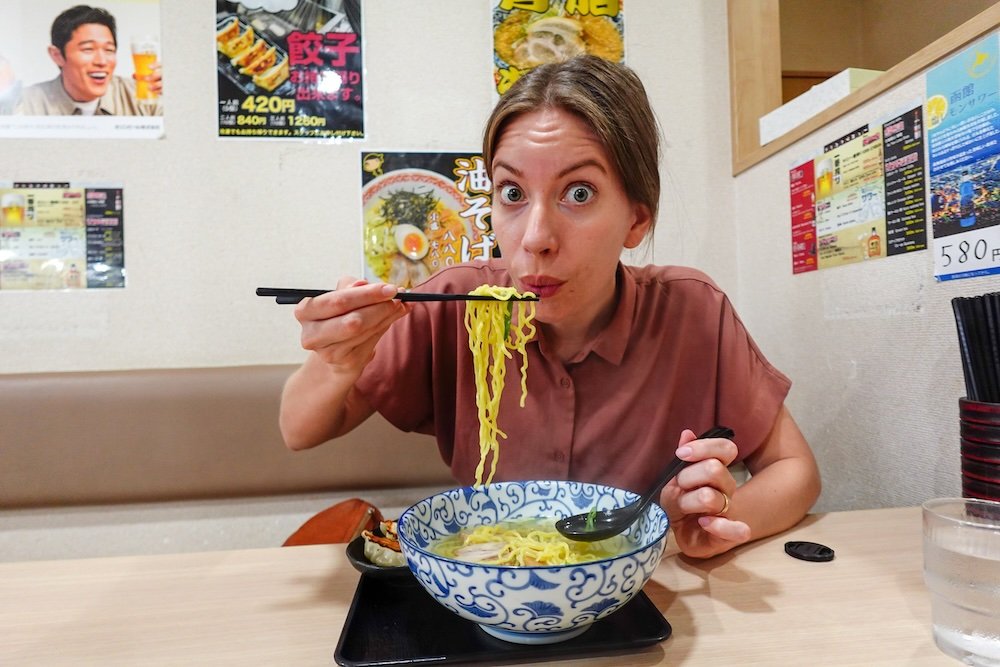
Hakodate Salt Ramen (塩ラーメン)
One of Hakodate’s most famous dishes, Hakodate Salt Ramen is known for its clear, light broth that’s delicately flavored with salt. Unlike the richer miso or tonkotsu ramen found elsewhere in Japan, this version features a broth made from chicken, pork bones, and seafood, creating a subtle yet savory base. It’s often topped with slices of tender pork, bamboo shoots, and green onions, making it a comforting and satisfying meal that’s perfect for warming up on a chilly day. You’ll find this local specialty in ramen shops across the city, each with its own unique twist on the recipe.

- Light Broth: The clear, salt-based broth is a refreshing change from heavier ramen varieties, highlighting the flavors of the ingredients.
- Simple Toppings: Common toppings include chashu pork, bamboo shoots, and green onions, letting the broth shine.
- Local Favorite: This ramen style is unique to Hakodate, making it a must-try for noodle lovers.
Tip: Pair your ramen with a side of gyoza (pan-fried dumplings) for a complete and delicious meal.
Kaisen-Don (海鮮丼)
Hakodate’s proximity to the sea means fresh seafood is always on the menu, and nothing showcases this better than kaisen-don, or seafood rice bowl. This dish features a generous serving of sashimi—such as tuna, salmon, squid, and uni (sea urchin)—artfully arranged atop a bed of vinegared rice. Each bite is a perfect blend of flavors and textures, with the freshness of the seafood complemented by the slightly tangy rice. Whether you’re enjoying it at the bustling Hakodate Morning Market or in a quiet sushi restaurant, kaisen-don is a must-try for seafood enthusiasts.
- Variety of Seafood: Enjoy a mix of local catches, from sweet shrimp to rich sea urchin, all in one bowl.
- Freshness Guaranteed: The seafood is sourced directly from the nearby waters, ensuring top quality and flavor.
- Perfect Breakfast or Lunch: Start your day with a hearty bowl of kaisen-don at the morning market, or enjoy it as a light lunch.
Tip: Try adding a bit of wasabi and soy sauce to enhance the flavors of the fresh sashimi.
Ika Meshi (いかめし)
For a truly unique Hakodate experience, try Ika Meshi, or stuffed squid. This local specialty features a whole squid stuffed with rice and then simmered in a sweet and savory soy-based sauce. The squid becomes tender and flavorful, while the rice absorbs the rich sauce, creating a deliciously chewy and satisfying dish. Originally a humble bento box staple, Ika Meshi has become a beloved part of Hakodate’s culinary scene, often enjoyed as a quick snack or a light meal.
- Chewy Delight: The tender squid and seasoned rice offer a delightful contrast of textures.
- Flavorful Sauce: Simmered in a sweet and savory sauce, the dish is both satisfying and full of umami.
- Convenient Snack: Often sold at train stations and markets, Ika Meshi is a popular on-the-go meal.
Tip: Look for Ika Meshi at the Hakodate Morning Market or local bento shops for an authentic taste of this specialty.
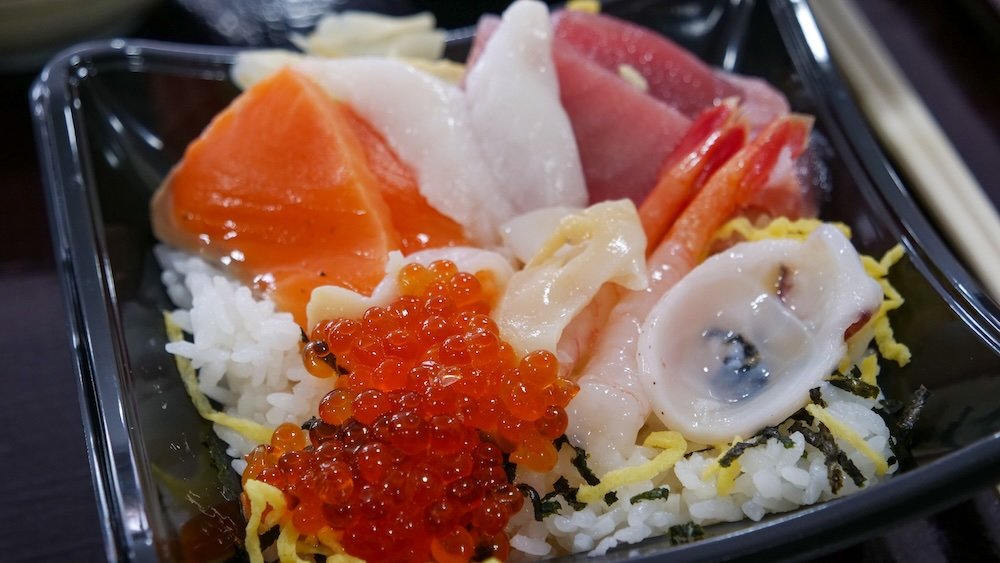
Uni Ikura Don (ウニイクラ丼)
If you’re a fan of seafood, then Uni Ikura Don is an absolute must-try. This luxurious rice bowl combines fresh uni (sea urchin) and ikura (salmon roe), offering a rich, buttery flavor with a burst of briny goodness. The creamy texture of the uni paired with the pop of the ikura creates a harmonious blend that’s both indulgent and satisfying. Served over a bed of perfectly seasoned rice, this dish is a celebration of Hakodate’s coastal bounty and is best enjoyed fresh at one of the city’s seafood markets or specialty restaurants.
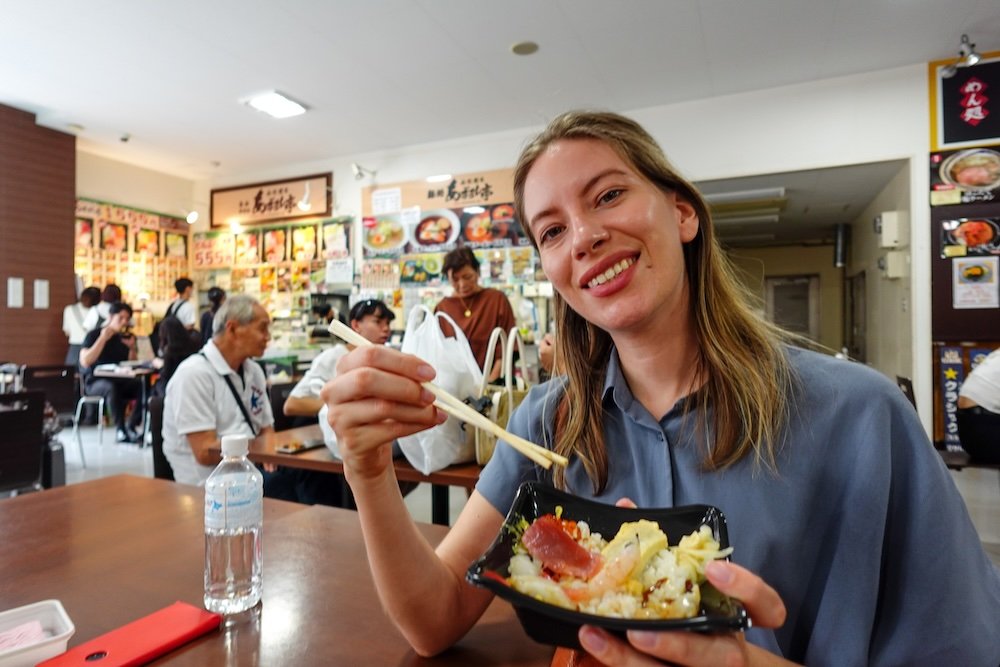
- Luxurious Flavors: The combination of buttery uni and salty ikura makes for an unforgettable seafood experience.
- Fresh and Local: Hakodate’s prime location ensures that the sea urchin and salmon roe are as fresh as they come.
- Beautiful Presentation: The vibrant colors of the uni and ikura make this dish as visually stunning as it is delicious.
Tip: Enjoy this dish with a side of miso soup to balance the rich flavors and cleanse your palate.

Lucky Pierrot’s Chinese Chicken Burger (ラッキーピエロ チャイニーズチキンバーガー)
A quirky and beloved local fast-food chain, Lucky Pierrot is famous for its unique menu and kitschy decor, but its Chinese Chicken Burger is the star of the show. This burger features juicy fried chicken coated in a tangy, sweet, and savory sauce, sandwiched between a soft bun. The flavors are bold and addictive, making it a must-try for visitors looking to sample Hakodate’s take on fast food. With multiple locations around the city, Lucky Pierrot is a fun and tasty stop for a quick bite or a casual meal.
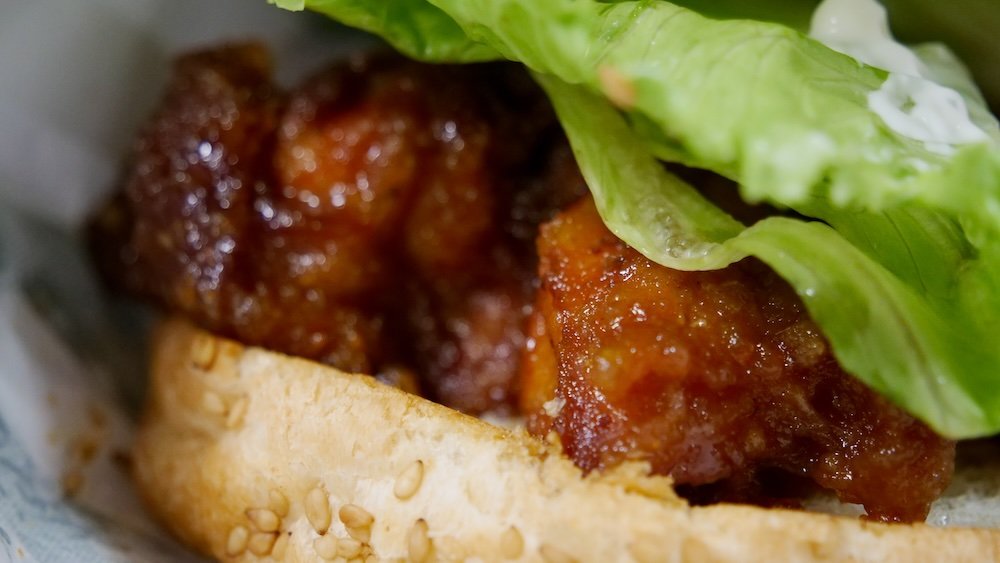
- Signature Burger: The Chinese Chicken Burger is the most popular item on the menu, known for its deliciously bold flavors.
- Unique Atmosphere: Each Lucky Pierrot location has its own eclectic theme, making every visit a new experience.
- Local Favorite: Loved by both locals and tourists, this burger chain is a Hakodate institution.
Tip: Pair your burger with a side of curly fries and a creamy milkshake for the ultimate Lucky Pierrot experience.
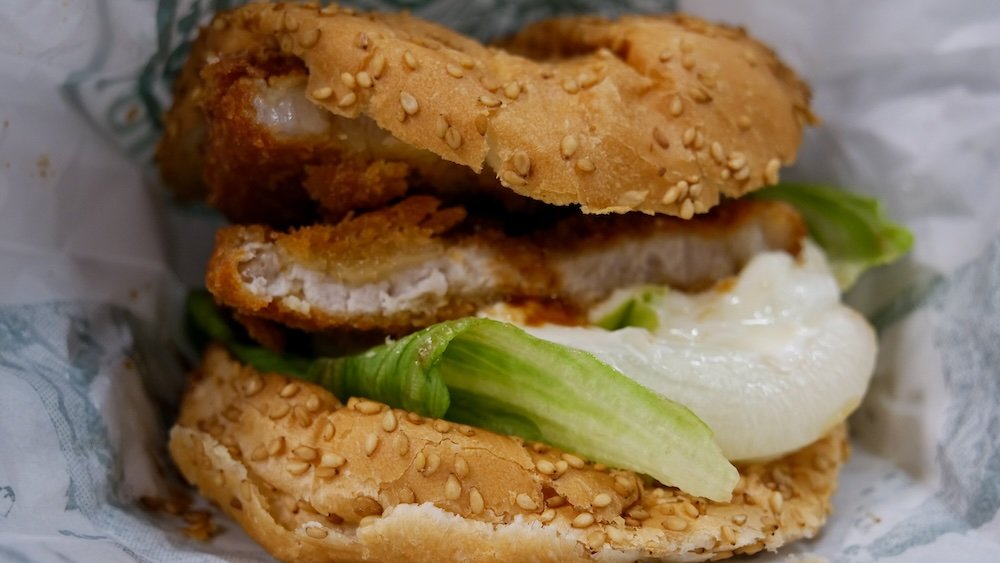
Lucky Pierrot’s Tonkatsu Pork Cutlet Hamburger
The Tonkatsu Pork Cutlet Hamburger features a generous, crispy pork cutlet that’s been coated in panko breadcrumbs and fried to golden perfection. The cutlet is tender and juicy on the inside, with a satisfying crunch on the outside. It’s then nestled between soft, fluffy buns and topped with shredded cabbage and a drizzle of tangy tonkatsu sauce. The result is a delicious blend of textures and flavors that makes every bite a delight. This burger is not only hearty and filling but also perfectly balanced, with the fresh cabbage providing a light, crisp contrast to the rich, savory cutlet.
- Crispy Cutlet: The panko-coated pork cutlet offers a perfect combination of crunch and juiciness, making it the star of the burger.
- Tonkatsu Sauce: This tangy, slightly sweet sauce adds depth to the burger, complementing the savory pork without overpowering it.
- Fresh Cabbage: Shredded cabbage provides a refreshing crunch that balances the richness of the cutlet and sauce.
Tip: For an extra kick, ask for a side of mustard to spread on your burger, adding a bit of heat that pairs perfectly with the tonkatsu flavors.
Dango (団子)
For a sweet treat, try dango, a traditional Japanese dessert made from sticky rice flour formed into chewy, bite-sized balls. In Hakodate, you’ll find a variety of dango flavors, including the classic mitarashi dango, which is coated in a sweet soy sauce glaze, and the anko dango, topped with red bean paste. This snack is perfect for a mid-afternoon pick-me-up as you explore the city. Enjoy it with a cup of green tea for a delightful taste of Japanese confectionery.
- Chewy Texture: The dango’s soft, chewy texture is both satisfying and unique, making it a favorite Japanese snack.
- Variety of Flavors: Choose from traditional flavors like sweet soy glaze, red bean paste, or matcha.
- Perfect Snack: Easy to eat on the go, dango is a convenient and tasty treat for busy travelers.
Tip: Visit a traditional tea house in the Motomachi District to enjoy dango with freshly brewed green tea.
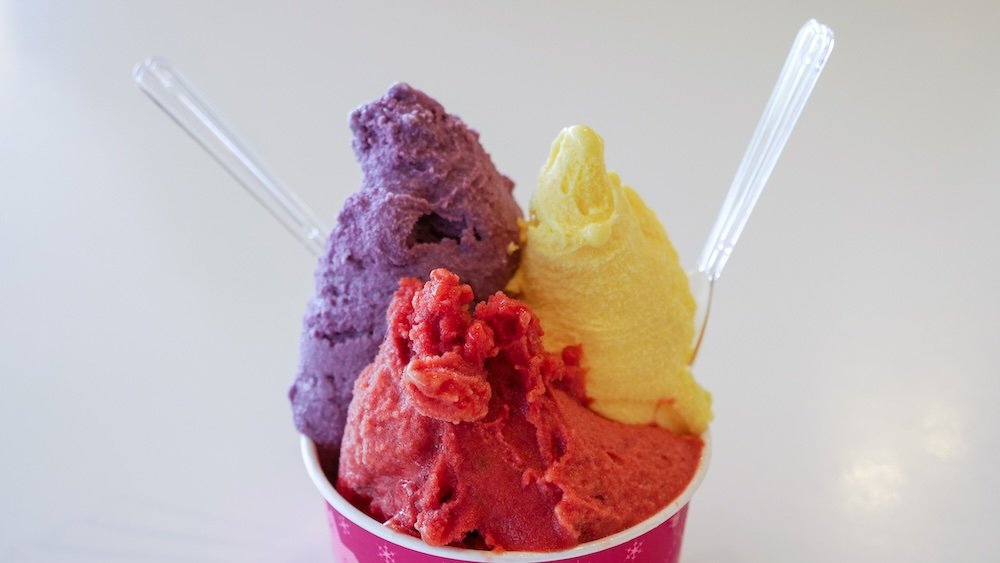
Hokkaido Soft Cream (北海道ソフトクリーム)
No visit to Hakodate is complete without trying Hokkaido Soft Cream, made from the region’s famously rich and creamy milk. The soft serve here is luxuriously smooth and comes in a variety of flavors, from classic vanilla to matcha and even local specialties like lavender and melon. You’ll find it sold at ice cream stands and cafes throughout the city, making it the perfect treat to enjoy as you stroll around Hakodate’s scenic streets and parks.
- Rich and Creamy: Made with high-quality Hokkaido milk, this soft cream is known for its incredibly smooth texture and rich flavor.
- Unique Flavors: Try flavors unique to Hokkaido, such as lavender, melon, or sweet corn.
- Perfect Dessert: Enjoy a cone of soft cream while exploring Hakodate’s beautiful coastal scenery.
Tip: For a real treat, try the double-flavored cone with vanilla and a local specialty like lavender or melon.
Local Sake (地酒)
For those looking to experience Hakodate’s nightlife, sampling some local sake is a must. The city’s breweries produce a variety of sake, from crisp, dry types to more full-bodied, aromatic options. Visit a local izakaya (Japanese pub) or sake bar to taste different varieties and learn about the brewing process. Many establishments offer sake tasting sets, allowing you to sample several different kinds and discover your favorites. It’s a wonderful way to unwind and enjoy the flavors of Hakodate after a day of sightseeing.
- Tasting Sets: Many sake bars offer tasting sets, making it easy to sample different varieties and find your favorite.
- Local Breweries: Discover unique flavors and styles from Hakodate’s local breweries.
- Izakaya Experience: Pair your sake with small plates of local dishes for an authentic Japanese dining experience.
Tip: Ask the staff for recommendations based on your taste preferences—they’ll be happy to guide you through the options.

Sushi in Hakodate
One of the defining features of sushi in Hakodate is the exceptional freshness and variety of ingredients. The city’s proximity to some of Japan’s richest fishing grounds means that the seafood here is often caught and served on the same day. You’ll find a wide array of local delicacies, including squid (ika), uni (sea urchin), and hotate (scallop), all of which are known for their delicate flavors and buttery textures. Each piece of sushi highlights the natural taste of the sea, with minimal seasoning to let the quality of the ingredients shine.

- Local Specialties: Hakodate’s squid is particularly famous, known for its tender texture and slightly sweet flavor. Don’t miss trying it in both nigiri and sashimi forms.
- Seasonal Seafood: Depending on the time of year, you might also find specialties like kani (crab), saba (mackerel), or buri (yellowtail), all prepared to perfection.
- Minimal Seasoning: Hakodate sushi chefs often use just a touch of wasabi and soy sauce to enhance, rather than overpower, the natural flavors of the fish.
Tip: Look for sushi featuring hokkigai (surf clam) or shako (mantis shrimp), which are unique to northern waters and a rare treat outside Hokkaido.

Tours For Visitors To Hakodate, Japan
Here’s a roundup of some of the best tours to take in Hakodate.
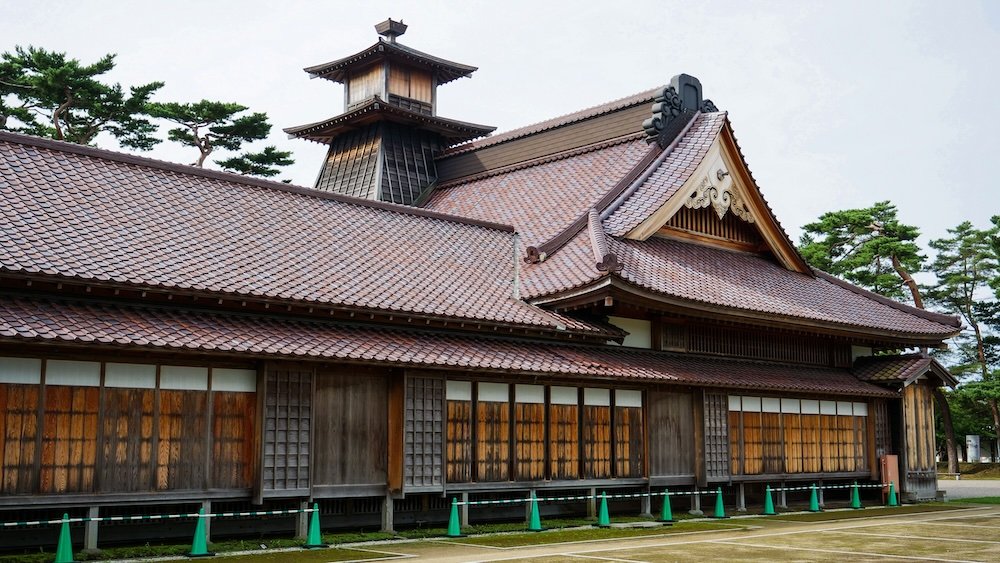
1. Hakodate City Sightseeing Tour
For first-time visitors, the Hakodate City Sightseeing Tour is a fantastic way to get acquainted with the city’s top attractions. This comprehensive tour typically includes stops at iconic spots like Goryokaku Park, the Kanemori Red Brick Warehouse, and the historic Motomachi District. You’ll travel by comfortable coach or van, with a knowledgeable guide providing insights into the city’s history and culture along the way. It’s a perfect introduction to Hakodate, allowing you to see all the highlights in just a few hours.
- Comprehensive Itinerary: Visit key sites like Goryokaku Park and the Motomachi District, learning about their historical significance.
- Comfortable Transport: Enjoy the convenience of a guided tour by coach or van, with transportation between attractions included.
- Knowledgeable Guide: Benefit from the expertise of a local guide who can answer your questions and share stories about Hakodate.
Tip: Book a morning tour to beat the crowds at popular sites like Goryokaku Park, and enjoy a more relaxed experience.
2. Night View Tour from Mount Hakodate
Hakodate is famous for its spectacular night view, often regarded as one of the best in Japan. A Night View Tour from Mount Hakodate is the perfect way to experience this breathtaking sight. The tour typically starts with a scenic cable car ride to the summit, where you’ll enjoy panoramic views of the city’s sparkling lights against the backdrop of the bay and surrounding mountains. A guide will point out key landmarks and share the history behind this famous viewpoint, making it more than just a photo opportunity.
- Scenic Cable Car Ride: Ascend Mount Hakodate by cable car, enjoying stunning views along the way.
- Panoramic Views: Take in the city’s dazzling nightscape from the observation deck at the summit.
- Guided Commentary: Learn about the history of Mount Hakodate and the significance of the view from your guide.
Tip: Bring a jacket or sweater, as it can get chilly at the top, especially during the evening.

3. Hakodate Morning Market Food Tour
Food lovers won’t want to miss the Hakodate Morning Market Food Tour, which takes you on a delicious journey through one of the city’s most vibrant culinary spots. The market is known for its incredible selection of fresh seafood, and on this tour, you’ll get to sample everything from uni (sea urchin) and crab to squid and kaisen-don (seafood rice bowl). Your guide will introduce you to the various vendors, explain the origins of the dishes, and even share tips on how to best enjoy them. It’s a fantastic way to start your day and experience the true flavors of Hakodate.
- Fresh Seafood Tastings: Try a variety of local seafood delicacies, including sashimi, kaisen-don, and more.
- Meet the Vendors: Learn about the history of the market and its vendors, gaining insights into Hakodate’s culinary culture.
- Cooking Demonstrations: Some tours include live cooking demos, where you can watch how the dishes are prepared.
Tip: Arrive hungry! There are plenty of samples to enjoy, and you’ll want to save room to try all the delicious offerings.
4. Hakodate Historical Walking Tour
Step back in time with the Hakodate Historical Walking Tour, which explores the city’s fascinating past. This tour takes you through the charming streets of the Motomachi District, home to beautifully preserved Western-style buildings, consulates, and churches. You’ll learn about Hakodate’s role as one of Japan’s first international trading ports and how it became a melting pot of cultures. Highlights include visits to the Old Public Hall of Hakodate Ward, the Hakodate Orthodox Church, and the Motomachi Roman Catholic Church.
- Historic Architecture: Discover stunning Western-style buildings and learn about their unique architectural features.
- Cultural Insights: Understand how Hakodate’s international past shaped its diverse cultural landscape.
- Scenic Views: Enjoy panoramic views of the harbor and city from various points in the Motomachi District.
Tip: Wear comfortable shoes, as the tour involves a fair amount of walking through hilly terrain.
5. Hakodate Bay Cruise
Experience Hakodate from a different perspective on a Hakodate Bay Cruise. This relaxing boat tour offers stunning views of the city’s skyline, historic port, and surrounding mountains. As you sail across the calm waters of the bay, you’ll learn about Hakodate’s maritime history and its role as a major trading hub. The cruise is particularly beautiful at sunset, when the sky and sea are bathed in shades of orange and pink. It’s a serene and scenic way to explore Hakodate, perfect for couples or those looking to unwind.
- Scenic Views: Take in beautiful views of Hakodate’s skyline, mountains, and historic port from the water.
- Maritime History: Learn about the city’s role as a trading port and its connection to Japan’s maritime heritage.
- Sunset Experience: Choose a sunset cruise for a romantic and picturesque end to your day.
Tip: Bring a camera to capture the stunning views, especially if you’re taking the cruise at sunset.

6. Goryokaku Park and Tower Tour
Explore one of Hakodate’s most iconic landmarks with a Goryokaku Park and Tower Tour. The star-shaped Goryokaku Fort, now a beautiful public park, is a must-see for history buffs and nature lovers alike. The tour includes a visit to the Goryokaku Tower, where you can enjoy a bird’s-eye view of the fort’s unique layout and the surrounding cherry trees, which are particularly stunning in spring. Your guide will share the history of the fort, its role in the Boshin War, and its transformation into a peaceful park.
- Historical Significance: Learn about the role of Goryokaku Fort in Japanese history and the Meiji Restoration.
- Beautiful Park: Stroll through the park’s scenic pathways, surrounded by cherry blossoms in spring.
- Tower Views: Enjoy panoramic views of the star-shaped fort and Hakodate from the Goryokaku Tower observation deck.
Tip: Visit during cherry blossom season (late April to early May) for an unforgettable hanami (flower viewing) experience.
7. Day Trip to Onuma Quasi-National Park
For nature enthusiasts, a Day Trip to Onuma Quasi-National Park is a perfect escape from the city. Located just a short train ride from Hakodate, this park is known for its beautiful lakes, small islands, and scenic walking trails. You can enjoy activities such as hiking, cycling, and even canoeing on the tranquil waters. The tour often includes a guided nature walk, where you’ll learn about the local flora and fauna, as well as the volcanic landscape created by nearby Mount Komagatake.
- Outdoor Activities: Enjoy hiking, cycling, and boating in a stunning natural setting.
- Scenic Views: Take in breathtaking views of Mount Komagatake and the park’s picturesque lakes and islands.
- Guided Nature Walk: Learn about the park’s unique ecosystem and wildlife from an experienced guide.
Tip: Bring a packed lunch or purchase a bento box before your trip to enjoy a picnic by the lake.
8. Hakodate Hot Spring and Onsen Tour
Unwind after a day of sightseeing with a Hakodate Hot Spring and Onsen Tour. This relaxing experience takes you to some of the best hot springs in the area, including the popular Yunokawa Onsen district. You’ll have the chance to soak in the soothing, mineral-rich waters while enjoying beautiful views of the ocean or surrounding nature. Some tours also include access to private baths, perfect for those seeking a more intimate experience. It’s a wonderful way to rejuvenate both body and mind.
- Therapeutic Waters: Experience the healing properties of Hakodate’s natural hot springs, known for their high mineral content.
- Scenic Locations: Enjoy a soak with views of the sea, gardens, or traditional Japanese architecture.
- Private Bath Options: Some tours offer private onsen experiences, ideal for couples or those who prefer more privacy.
Tip: Don’t forget to bring a small towel for drying off, and remember to follow onsen etiquette for a respectful and enjoyable visit.
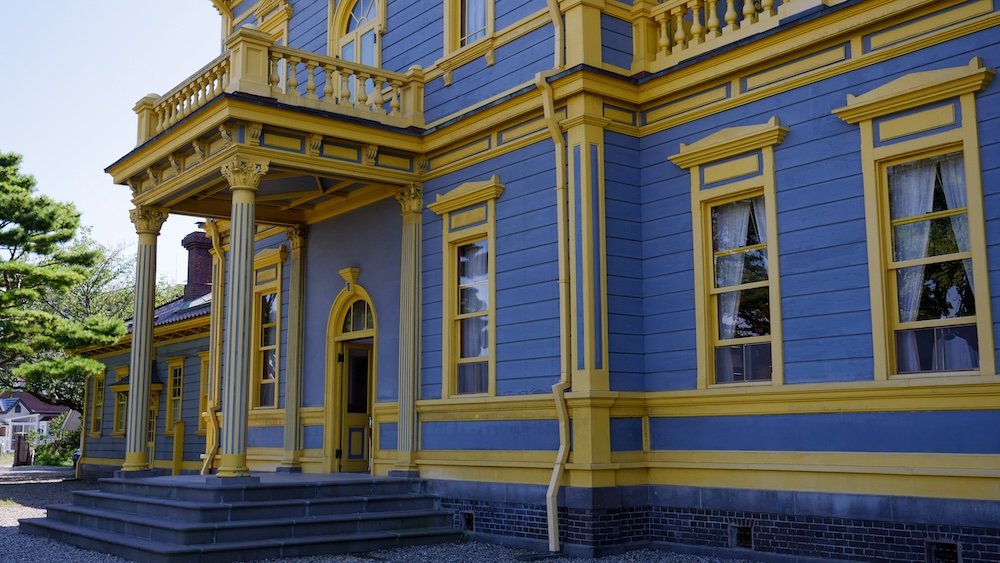
Hakodate Accommodations Guide: Hotels, Guesthouses and Hostels
Here’s a guide to some of the best accommodations in Hakodate to help you find the perfect place to stay.
1. Luxury Hotels: Comfort and Style
For those seeking a luxurious experience, Hakodate offers a range of high-end hotels that combine comfort with stunning views and top-notch amenities. Many of these hotels are situated near the waterfront or on higher ground, providing breathtaking panoramas of the city and the bay. Expect spacious rooms, elegant interiors, and a level of service that will make your stay truly memorable. These hotels often feature on-site dining options, spa facilities, and easy access to popular attractions, making them ideal for travelers who want to enjoy Hakodate in style.
- Waterfront Views: Many luxury hotels offer stunning views of Hakodate Bay or Mount Hakodate, perfect for enjoying a sunset from your room.
- Exceptional Service: Enjoy attentive service and a range of amenities, from concierge services to spa treatments.
- Fine Dining: Some hotels boast gourmet restaurants serving local and international cuisine, ideal for a special evening meal.
Tip: Book a room with a view of Mount Hakodate to enjoy the city’s famous nightscape right from your window.
2. Boutique Guesthouses: Cozy and Unique
If you prefer a more intimate and personalized experience, consider staying in one of Hakodate’s charming boutique guesthouses. These accommodations often reflect the local character and culture, featuring traditional Japanese decor or modern, quirky designs. Guesthouses typically offer comfortable, well-appointed rooms and common areas where you can relax and mingle with other travelers. Many are located in the historic Motomachi District or close to the city’s main attractions, providing a cozy home base for your adventures.
- Authentic Atmosphere: Experience Hakodate’s local culture through traditional tatami rooms, handmade furnishings, and personalized hospitality.
- Charming Locations: Many guesthouses are set in renovated historic buildings or quiet residential areas, offering a peaceful retreat.
- Community Vibe: Enjoy the opportunity to meet other travelers in common areas like shared kitchens or living rooms.
Tip: Look for guesthouses that offer breakfast, often featuring homemade dishes using local ingredients for a true taste of Hakodate.
3. Budget-Friendly Hostels: Affordable and Social
Hakodate’s hostels are a great option for budget-conscious travelers who want to enjoy the city without breaking the bank. These accommodations provide clean, comfortable dormitory-style or private rooms, along with shared facilities like kitchens and lounges. Many hostels also organize events and tours, making them perfect for solo travelers looking to meet new people and explore Hakodate together. With convenient locations near transportation hubs and key attractions, staying at a hostel is a smart choice for those who prioritize both cost and community.
- Affordable Rates: Hostels offer some of the most budget-friendly accommodations in Hakodate, ideal for backpackers or students.
- Social Atmosphere: Meet fellow travelers in communal areas, where you can swap travel tips or plan group outings.
- Convenient Locations: Most hostels are situated near train stations, markets, and major attractions, making it easy to get around.
Tip: Check if the hostel offers bike rentals—cycling is a great way to explore Hakodate at your own pace.
4. Traditional Ryokan: A Japanese Experience
For a truly unique stay, consider booking a ryokan, a traditional Japanese inn that offers a glimpse into the country’s cultural heritage. Ryokans in Hakodate often feature tatami-matted rooms, futon beds, and sliding paper doors, providing a tranquil and authentic atmosphere. Many ryokans also have on-site onsen (hot spring baths), where you can soak and unwind after a day of sightseeing. This type of accommodation is perfect for those who want to experience Japanese hospitality and tradition in a serene setting.
- Traditional Rooms: Sleep on comfortable futons laid out on tatami mats, surrounded by simple yet elegant decor.
- Onsen Baths: Enjoy the relaxation of a hot spring bath, often set in beautiful gardens or with views of the surrounding nature.
- Kaiseki Meals: Some ryokans offer multi-course kaiseki dinners, featuring seasonal and locally sourced ingredients, served in your room.
Tip: When staying at a ryokan, remember to follow traditional etiquette, such as wearing the provided yukata (casual kimono) and removing your shoes before entering your room.
5. Capsule Hotels: Modern and Efficient
For a futuristic and minimalist stay, try one of Hakodate’s capsule hotels. These accommodations offer compact, pod-like sleeping units that are surprisingly comfortable and come equipped with all the essentials, including personal lighting, charging ports, and privacy screens. Capsule hotels are an excellent choice for solo travelers or those looking for a quick and convenient overnight stay. Many also provide shared amenities like lounges, kitchens, and even onsen facilities, ensuring you have everything you need at an affordable price.
- Space-Efficient: Capsule hotels maximize space with cleverly designed sleeping pods that provide privacy and comfort.
- Modern Amenities: Enjoy facilities like Wi-Fi, shared bathrooms, and communal lounges in a sleek, modern environment.
- Affordable Comfort: Get a good night’s sleep without the cost of a full hotel room, making it a great option for budget travelers.
Tip: Store your luggage in the designated lockers or storage areas, as capsule hotels typically have limited space inside the sleeping pods.

Day Trips From Hakodate, Japan
Here are some of the best day trips to take from Hakodate, each offering a unique slice of Hokkaido’s charm.
1. Onuma Quasi-National Park
Located just a 30-minute train ride from Hakodate, Onuma Quasi-National Park is a breathtaking destination that’s perfect for nature lovers and outdoor enthusiasts. The park is renowned for its picturesque lakes, dotted with small islands and framed by the majestic silhouette of Mount Komagatake. There are several walking and cycling paths that wind through the park, offering plenty of opportunities to soak in the stunning views. You can also rent a canoe or paddleboat to explore the tranquil waters up close, making it a perfect spot for a relaxing yet active day out.
- Scenic Trails: Explore the park’s network of trails that take you through forests, over bridges, and along the shoreline, all with beautiful views of Mount Komagatake.
- Boating Adventures: Rent a canoe or paddleboat to glide across the serene waters, weaving between the park’s many islands.
- Seasonal Beauty: Visit in spring for cherry blossoms, summer for lush greenery, or autumn for vibrant foliage.
Tip: Pack a picnic lunch to enjoy by the lakeside—there are plenty of scenic spots perfect for a leisurely meal.
2. Matsumae Castle and Town
Step back in time with a visit to Matsumae, a historic town that’s home to one of Hokkaido’s only original castles. Matsumae Castle, also known as the “Little Edo of the North,” dates back to the 17th century and is surrounded by beautiful gardens filled with over 10,000 cherry trees. The town itself is a delightful mix of traditional architecture and quaint shops, offering a glimpse into Japan’s feudal past. It’s especially beautiful in spring, when the cherry blossoms are in full bloom, drawing visitors from all over the region.
- Historic Castle: Explore the well-preserved Matsumae Castle, which offers panoramic views from its tower and insights into the area’s samurai history.
- Cherry Blossom Heaven: Stroll through the castle’s expansive gardens, famous for their stunning cherry blossoms in April and May.
- Cultural Heritage: Visit the Matsumae Clan Mansion and the nearby historical museums to learn about the town’s rich cultural past.
Tip: If you’re visiting in spring, plan your trip during the Matsumae Sakura Festival for an unforgettable cherry blossom experience.
3. Esan Misaki Park and Mount Esan
For those seeking adventure and dramatic natural landscapes, a trip to Mount Esan and Esan Misaki Park is a must. Located about an hour’s drive from Hakodate, this active volcano offers rugged hiking trails that lead to its summit, where you can enjoy breathtaking views of the surrounding sea and coastline. The volcanic landscape, with its steaming vents and rocky terrain, is otherworldly and provides a stark contrast to the lush greenery of Esan Misaki Park below. It’s an ideal destination for hikers and nature enthusiasts looking for a more off-the-beaten-path experience.
- Challenging Hike: Climb to the summit of Mount Esan for sweeping views of the Pacific Ocean and the surrounding landscape.
- Volcanic Scenery: Explore the unique terrain of an active volcano, complete with steaming vents and sulfur deposits.
- Scenic Park: Relax in Esan Misaki Park, known for its beautiful coastal views and seasonal flowers, including vibrant azaleas in early summer.
Tip: Wear sturdy shoes and bring plenty of water, as the trails can be steep and exposed to the elements.
4. Yunokawa Onsen
For a more relaxing day trip, head to Yunokawa Onsen, one of the oldest and most popular hot spring areas in Hokkaido. Located just a short drive or bus ride from Hakodate, Yunokawa offers a variety of ryokan (traditional inns) and public baths where you can soak in mineral-rich, soothing waters. The onsen district is particularly beautiful in winter, when snowflakes fall gently on the open-air baths, creating a truly magical atmosphere. After a rejuvenating soak, you can explore the nearby Tropical Botanical Garden or visit the quirky Yunokawa Monkey Park.
- Relaxing Onsen: Enjoy the therapeutic benefits of Yunokawa’s hot springs, known for their high-quality mineral content and relaxing ambiance.
- Snowy Delights: Experience the unique joy of an outdoor bath in winter, surrounded by snow-covered scenery.
- Nearby Attractions: Visit the Yunokawa Monkey Park, where you can watch Japanese macaques enjoying their own hot spring baths.
Tip: Reserve a private onsen experience for a more intimate and tranquil soak, especially if you’re visiting with a partner or family.
5. Trappist Monastery
Escape to a place of peace and reflection with a visit to the Trappist Monastery, located about 30 minutes from Hakodate. This serene monastery, nestled amidst rolling hills and forests, was established by French monks in the late 19th century and remains an active religious site. The grounds include a beautiful chapel and a gift shop where you can purchase handmade items such as butter, cookies, and cheese produced by the monks. It’s a wonderful destination for those looking to experience a quieter, more contemplative side of Hokkaido.
- Serene Setting: Walk through the tranquil grounds of the monastery, surrounded by lush greenery and picturesque landscapes.
- Chapel and Grounds: Visit the beautiful chapel, with its simple yet elegant architecture, and enjoy the peaceful atmosphere.
- Monastic Goods: Purchase delicious handmade products like butter and cookies, made using traditional methods passed down through generations.
Tip: Respect the monastery’s peaceful atmosphere by speaking softly and dressing modestly during your visit.
6. Hokuto City and Jomon Archaeological Sites
History buffs will enjoy a day trip to Hokuto City, home to the fascinating Jomon Archaeological Sites. These sites, designated as UNESCO World Heritage, provide a glimpse into the lives of Japan’s ancient Jomon people, who lived in the region thousands of years ago. Explore the Kakinoshima Site and Ofune Site, where you can see the remains of ancient dwellings, pottery, and artifacts. The nearby Jomon Culture Center offers interactive exhibits and displays that bring this ancient culture to life.
- Ancient Dwellings: Visit the excavated remains of Jomon-era settlements, providing insight into prehistoric life in Japan.
- Artifacts and Pottery: See beautifully crafted Jomon pottery and tools, some of the oldest examples of ceramic art in the world.
- Cultural Center: Learn more about the Jomon people through informative exhibits and engaging activities at the Jomon Culture Center.
Tip: Join a guided tour to gain a deeper understanding of the significance of these archaeological sites and the history they reveal.
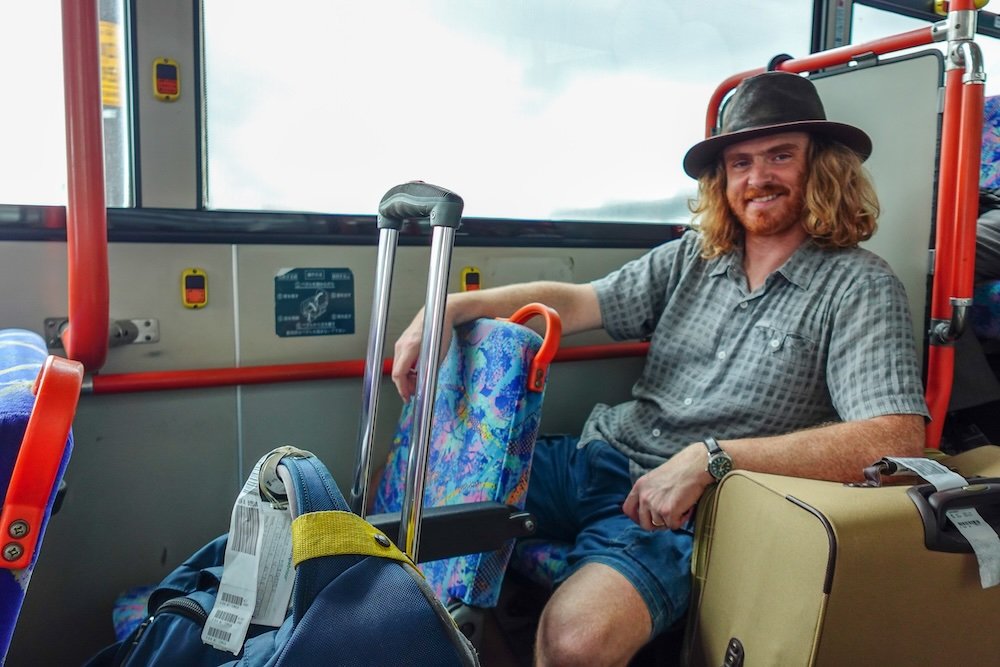
Hakodate Transportation Guide
Here’s a guide to help you make the most of Hakodate’s transportation options during your visit.
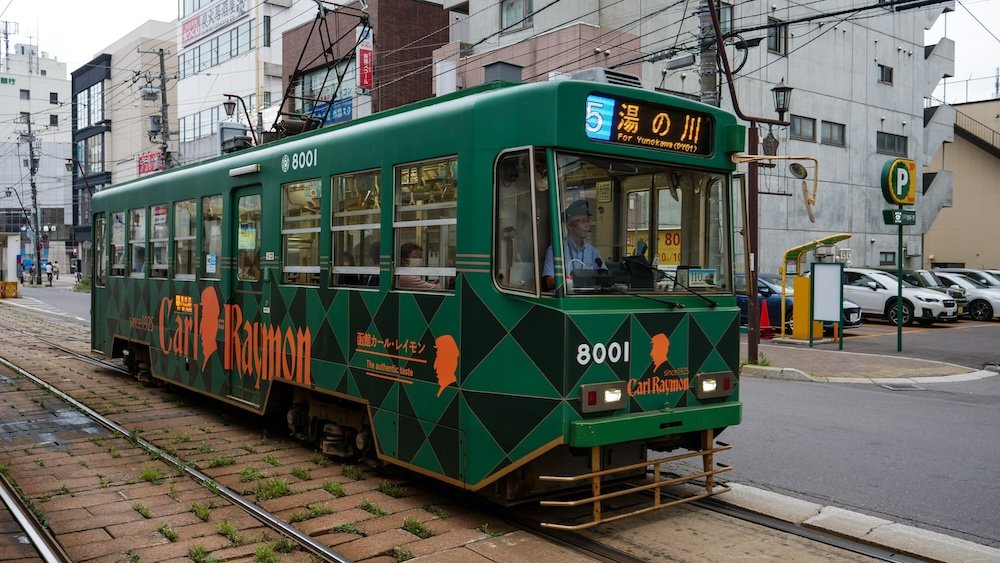
Trams: A Nostalgic Ride Through the City
Hakodate’s iconic trams are a charming and efficient way to explore the city. With routes that pass by major attractions like Hakodate Station, the Kanemori Red Brick Warehouses, and the historic Motomachi District, trams are a convenient choice for sightseeing. The vintage vibe of the wooden interiors and the gentle sway of the ride add a touch of nostalgia to your journey. Simply hop on, sit back, and enjoy the scenic views as you glide through Hakodate’s picturesque streets.
- Convenient Routes: The tram lines connect key areas of the city, making it easy to reach most major attractions.
- Affordable Travel: A single ride costs around 210-250 yen, or you can opt for a one-day tram pass for unlimited rides.
- Authentic Experience: Riding the tram is not just about getting from A to B—it’s a cultural experience that lets you see the city like a local.
Tip: Grab a one-day tram pass for just 600 yen—it’s a great deal if you’re planning to hop on and off at multiple stops throughout the day.
Buses: Access to Outlying Areas
For destinations that are off the tram lines, Hakodate’s bus network is your best bet. Buses connect the city center to outlying attractions like Yunokawa Onsen and Mount Hakodate Ropeway, as well as to the Hakodate Airport. They’re also a convenient option for reaching places like Trappistine Monastery and the Goryokaku Fort area. While the bus system may seem a bit complex at first, most routes are clearly marked, and there’s usually English signage at major stops, making it relatively easy to navigate.
- Extensive Coverage: Buses go to places not serviced by the tram, such as Yunokawa Onsen and Mount Hakodate Ropeway.
- Airport Access: Take the airport shuttle bus for a hassle-free trip to and from Hakodate Airport.
- Affordable Fares: Most bus rides within the city cost between 200-300 yen, with day passes available for more economical travel.
Tip: Use the Hakodate Bus One-Day Pass for unlimited bus rides within the city—it’s just 800 yen and covers most major routes.
Taxis: Quick and Convenient
If you prefer more direct transportation, Hakodate’s taxis are a quick and comfortable way to get around. They’re especially convenient for shorter trips, early morning departures, or late-night returns when public transport might be less frequent. Taxis can be hailed on the street or found at designated taxi stands near train stations and busy areas. While they’re more expensive than public transport, they offer door-to-door service and are a reliable option if you’re traveling in a group or carrying luggage.
- Readily Available: Taxis can be easily found near train stations, hotels, and popular tourist spots.
- Comfortable Rides: Enjoy a comfortable and private ride, perfect for those looking to travel at their own pace.
- English-Friendly: Many taxi drivers in Hakodate are familiar with key destinations and often have GPS, so don’t worry about language barriers.
Tip: If you’re heading to a specific attraction, show the driver a map or the name written in Japanese to avoid any confusion.
Car Rentals: Explore Beyond the City
Renting a car is a fantastic option if you’re planning to explore beyond Hakodate and visit more remote areas like Onuma Quasi-National Park or the rugged coastline around Mount Esan. With a car, you can travel at your own pace and enjoy the flexibility to visit lesser-known spots that are harder to reach by public transport. Several rental companies operate near Hakodate Station, offering a range of vehicles from compact cars to larger SUVs. Keep in mind that driving in winter can be challenging due to icy roads, so be cautious if you’re visiting during the colder months.
- Flexible Travel: Explore the region at your own pace and visit off-the-beaten-path destinations that aren’t easily accessible by public transport.
- Scenic Drives: Enjoy stunning coastal routes and mountain roads with breathtaking views along the way.
- Parking Availability: Most tourist attractions and hotels offer ample parking, making it easy to get around by car.
Tip: Make sure to have an International Driving Permit (IDP) if you plan to rent a car, as it’s required for foreign visitors in Japan.
Hakodate Airport: Gateway to the City
Hakodate Airport serves as the main gateway for travelers arriving by air. Located just a 20-minute drive from the city center, the airport is well-connected by bus and taxi. Flights to and from major Japanese cities like Tokyo, Osaka, and Sapporo are frequent, making it easy to include Hakodate in a broader travel itinerary. The airport itself is compact but efficient, with amenities like rental car counters, souvenir shops, and cafes offering a pleasant start or end to your journey.
- Easy Access: Reach the city center via the airport shuttle bus or a short taxi ride.
- Convenient Facilities: Enjoy amenities like free Wi-Fi, dining options, and shopping for last-minute souvenirs.
- Flight Connections: Frequent flights to and from major cities make Hakodate a convenient stop on your Hokkaido itinerary.
Tip: Arrive at least an hour before your flight for a smooth check-in process, especially if you’re planning to pick up some last-minute gifts.
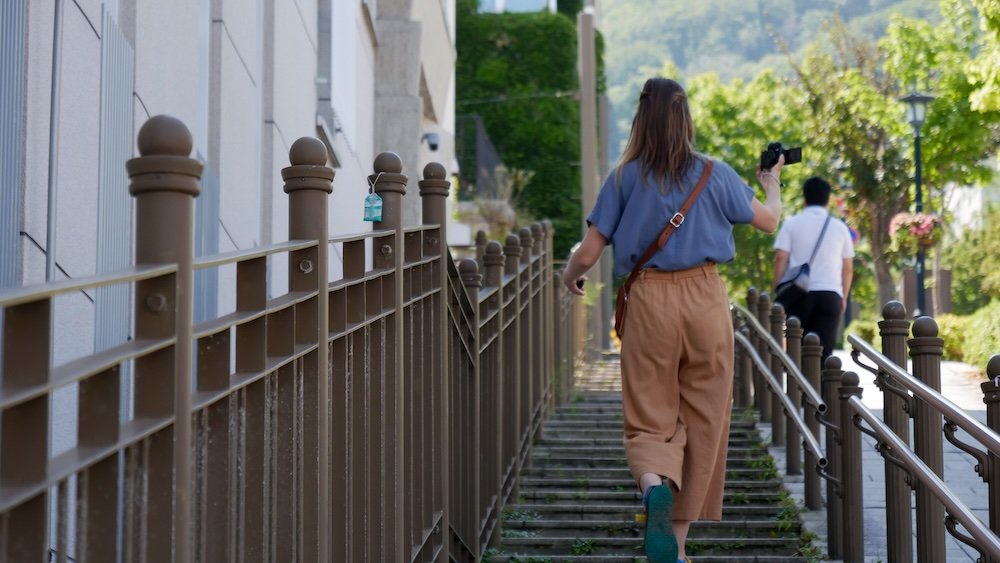
Walking and Cycling: Explore Hakodate Up Close
One of the best ways to experience Hakodate is on foot or by bicycle. The city’s compact size and well-maintained streets make walking a pleasant way to explore the historic districts, especially in areas like Motomachi and around Goryokaku Park. For those who enjoy cycling, bike rentals are available near Hakodate Station, offering a convenient way to cover more ground. Pedal your way along the scenic waterfront, through peaceful parks, or up to the base of Mount Hakodate for some leisurely sightseeing.
- Pedestrian-Friendly: Enjoy a leisurely stroll through Hakodate’s charming neighborhoods and scenic parks.
- Bike Rentals: Rent a bike to explore more of the city at your own pace, with rental shops conveniently located near Hakodate Station.
- Scenic Routes: Cycle along the waterfront or through the tree-lined streets of Motomachi for a unique perspective on the city.
Tip: Wear comfortable shoes and bring a map or download a navigation app—getting a little lost is part of the fun in a walkable city like Hakodate!
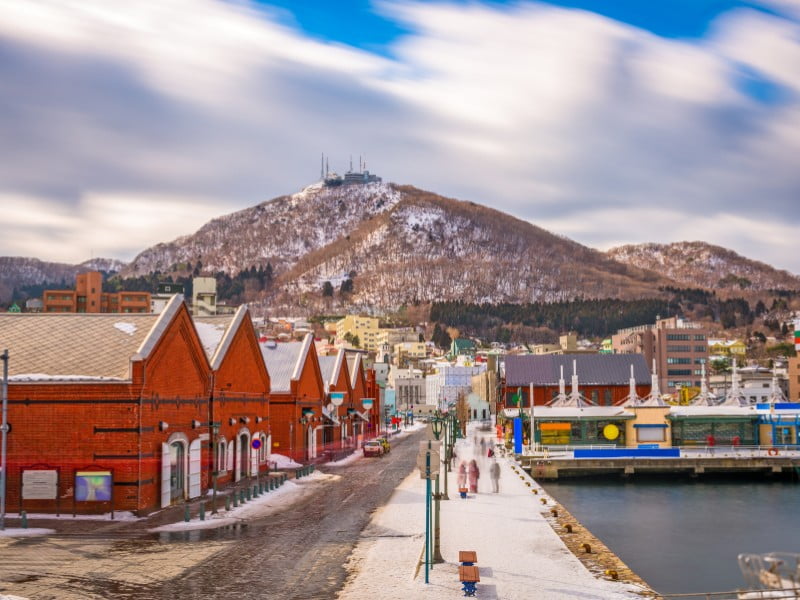
Where To Visit After Your Trip To Hakodate?
Here are some must-visit destinations to consider after your time in Hakodate.
source: Nomadic Samuel + That Backpacker from Samuel and Audrey on YouTube
1. Sapporo: Hokkaido’s Dynamic Capital
Sapporo, the bustling capital of Hokkaido, is a vibrant city known for its stunning seasonal festivals, delicious food, and lively nightlife. A few hours north of Hakodate by train, Sapporo is a fantastic destination for those looking to experience urban energy with a distinct northern twist. Stroll through the iconic Odori Park, visit the historic Sapporo Beer Museum, and indulge in a bowl of the city’s famous miso ramen. Whether you’re exploring the bustling streets or relaxing in a cozy cafe, Sapporo offers an exciting contrast to the more laid-back atmosphere of Hakodate.
- Seasonal Festivals: Don’t miss the Sapporo Snow Festival in winter, featuring massive ice sculptures, or the vibrant summer Yosakoi Soran Festival.
- Gourmet Delights: Savor local specialties like Genghis Khan (grilled lamb) and Hokkaido’s fresh seafood at the Nijo Market.
- Craft Beer Scene: Visit the Sapporo Beer Museum to learn about the city’s brewing history and enjoy a tasting session.
Tip: Head to the top of the JR Tower Observation Deck for panoramic views of the city, especially beautiful at night.
source: That Backpacker + Nomadic Samuel – Samuel and Audrey YT channel
2. Otaru: A Charming Canal Town
Located just a short train ride from Sapporo, the picturesque town of Otaru is famous for its beautifully preserved canal area, charming old warehouses, and thriving arts scene. Stroll along the scenic canal lined with historic buildings, many of which have been converted into museums, cafes, and shops. The town is also renowned for its glassworks and musical box workshops, where you can browse unique souvenirs or create your own. Otaru’s fresh seafood, particularly its sushi, is a highlight for food lovers and a must-try during your visit.
- Otaru Canal: Enjoy a leisurely walk along the canal, especially enchanting when illuminated at night or during the winter snow.
- Artisanal Crafts: Explore the town’s famous glass studios and musical box museums, offering a variety of handmade goods.
- Delicious Sushi: Try the “Otaru sushi” experience, featuring some of the freshest seafood served in a cozy, authentic setting.
Tip: Visit the Otaru Music Box Museum to see a stunning collection of intricately crafted music boxes and even create your own as a special keepsake.
source: Nomadic Samuel and That Backpacker teaming up for Samuel and Audrey channel
3. Noboribetsu: The Gateway to Hell Valley
If you’re craving some relaxation and a bit of adventure, head to Noboribetsu, one of Hokkaido’s most famous hot spring towns. Known for its geothermal activity, the area’s main attraction is Jigokudani (Hell Valley), a dramatic landscape of bubbling sulfuric hot springs, steaming vents, and volcanic craters. After exploring this otherworldly terrain, you can unwind in one of the many onsen (hot spring baths) the town is known for. Noboribetsu is also home to the quirky Noboribetsu Bear Park, where you can get up close with native brown bears in a unique, natural setting.
- Hell Valley: Wander through the steamy, sulfurous landscape of Jigokudani, which showcases the area’s intense geothermal activity.
- Healing Hot Springs: Soak in the mineral-rich waters of Noboribetsu’s onsen, believed to have therapeutic properties.
- Bear Park: Visit the Noboribetsu Bear Park to see Hokkaido’s native brown bears up close and learn about their habitat and conservation.
Tip: Try a dip in the natural hot spring footbath at Oyunuma River—a free and soothing way to experience the onsen’s benefits.
4. Furano and Biei: Flower Fields and Rolling Hills
For a change of pace, venture into the heart of Hokkaido to the stunning landscapes of Furano and Biei. Known for their picturesque fields of lavender, sunflowers, and colorful seasonal flowers, these towns are a photographer’s dream. In summer, the rolling hills of Biei are blanketed in a vibrant patchwork of colors, while in winter, they transform into a serene snow-covered wonderland. Don’t miss a visit to Farm Tomita in Furano, where you can stroll through endless fields of lavender and try unique lavender-flavored treats.
- Lavender Fields: Visit Furano’s famous Farm Tomita to see fields of blooming lavender, best viewed from late June to early August.
- Biei’s Scenic Roads: Drive along the Panorama Road or Patchwork Road in Biei to take in breathtaking views of rolling hills and distant mountains.
- Winter Wonderland: Experience the quiet beauty of the region’s snow-covered landscapes, ideal for photography and winter sports.
Tip: Stop by a local ice cream stand to try Furano’s signature lavender ice cream—refreshing and subtly floral.
5. Shiretoko Peninsula: Hokkaido’s Untamed Wilderness
For the ultimate adventure, consider heading to the remote Shiretoko Peninsula, a UNESCO World Heritage site known for its pristine wilderness and diverse wildlife. Located in northeastern Hokkaido, this rugged region offers some of Japan’s most stunning natural scenery, including dramatic coastlines, dense forests, and cascading waterfalls. Take a boat tour along the coast to spot wildlife like bears, eagles, and seals, or hike through the beautiful Shiretoko National Park to reach the breathtaking Kamuiwakka Hot Falls, where you can bathe in natural hot spring water as it flows down a rocky riverbed.
- Wildlife Watching: Spot brown bears, foxes, and a variety of bird species in their natural habitats, particularly along the coastline.
- Scenic Hikes: Explore trails through Shiretoko National Park, offering access to remote hot springs and stunning viewpoints.
- Boat Tours: Cruise along the rugged coastline to view dramatic cliffs and waterfalls, and to get close to marine wildlife.
Tip: Plan your visit between June and September for the best hiking and wildlife viewing conditions, as some trails and roads are closed in winter.
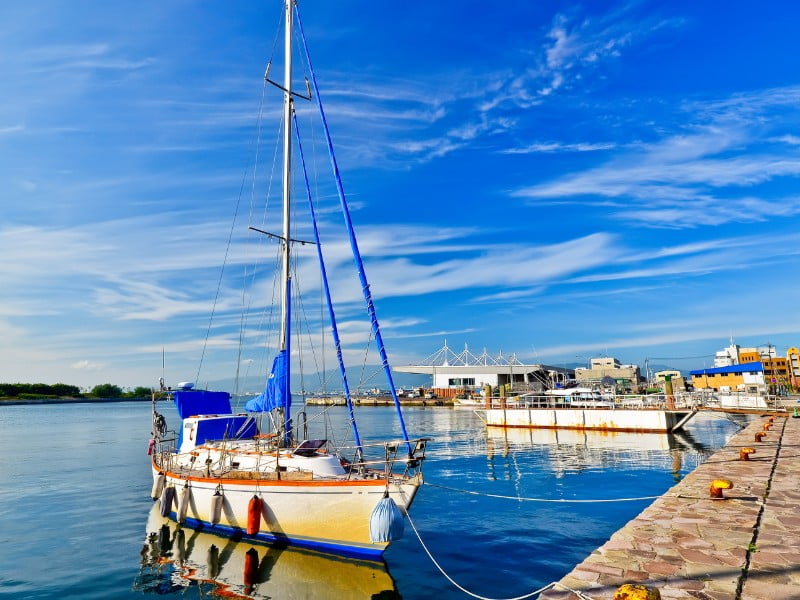
Key Questions About Visiting Hakodate, Japan: Practical Answers, Local Tips & Trip-Planning Advice
How many days do I really need in Hakodate to see the main sights without rushing?
Three days is the sweet spot. With two full days you can cover the core sights like Mount Hakodate, Motomachi, Goryokaku, the Red Brick Warehouses, and the Morning Market, but you’ll be moving at a pretty brisk pace. With three days you can slow things down:
- Day 1 for city highlights (trams, Motomachi, Red Brick Warehouses, night view from Mount Hakodate)
- Day 2 for Goryokaku + museums + food focus
- Day 3 for a side trip like Yunokawa Onsen or Onuma Quasi-National Park.
If you’re planning multiple day trips (Onuma, Matsumae, Mount Esan), I’d stretch it to four or even five nights and use Hakodate as a base.
What’s the best time of year to visit Hakodate for weather and scenery?
It depends. Hakodate works in all four seasons, but the vibe shifts a lot. Spring (late April–May) is ideal for cherry blossoms at Goryokaku and more comfortable temps. In 2025, for example, Hokkaido cherry blossoms are expected to peak around early May. Summer (June–August) is lush, cooler than Tokyo, and great for day trips and hiking. Autumn (late September–early November) brings crisp air and beautiful foliage around parks and Mount Esan. Winter is cold, snowy, and moody, but amazing if you love onsen, night views, and fewer crowds. If you want blossoms, aim for early May; for hiking and coastal views, late June to October is perfect.
Is Hakodate worth visiting in winter or should I avoid the cold season?
Absolutely. Hakodate in winter is underrated. Yes, it’s cold and windy, but the city takes on this cozy, cinematic feel—steam rising from onsen, snow-dusted churches in Motomachi, and clear, sharp night views from Mount Hakodate. Yunokawa Onsen is particularly magical with open-air baths in the snow, and the Tropical Botanical Garden monkeys soaking in hot pools are peak “only in Japan” moments. Trams and buses still run, streets get cleared, and crowds are thinner. Just pack for proper winter: insulated jacket, hat, gloves, good footwear with grip, and warm socks.
Is Hakodate a good base for exploring southern Hokkaido or should I split my stay?
Yes, Hakodate makes a solid base. The city has a decent range of accommodation, great food, and easy transport connections by train, tram, bus, and rental car. From Hakodate you can day-trip to Onuma Quasi-National Park, Yunokawa Onsen, Matsumae Castle, Mount Esan, Hokuto’s Jomon sites, and coastal viewpoints like Cape Tachimachi. If you’re going a lot farther north (Furano, Biei, Shiretoko), I’d move base to Sapporo or Asahikawa, but for the southern chunk of Hokkaido, Hakodate works really well as “home base”.
What’s the easiest way to get around Hakodate without renting a car?
Trams + buses are your best friends. The historic trams (lines 2 and 5) cover many of the major sightseeing areas—Hakodate Station, Motomachi, Red Brick Warehouses, and Goryokaku. A one-day tram pass is inexpensive and lets you hop on and off freely. For spots that are further out, like Yunokawa Onsen, Hakodate Airport, or the ropeway station, buses fill in the gaps. Taxis are handy at night or for short hops, but you can easily do most of your sightseeing on foot, tram, and bus with a simple paper map or an offline map app.
Do I need to rent a car in Hakodate or is public transport enough?
Not really, unless you’re chasing more remote spots. Public transport is perfectly adequate for a classic first-time visit focused on city sights, Goryokaku, the Morning Market, Mount Hakodate, and Yunokawa. I’d look at renting a car if:
- You want to hike Mount Esan or visit Cape Shiryazaki and other remote capes.
- You prefer flexible timing and scenic drives.
Just keep in mind that winter driving can be icy and stressful if you’re not used to it, so in the colder months I’d lean on trains, buses, and tours instead.
Is Hakodate expensive compared to Tokyo or Sapporo?
Nope. Overall, Hakodate tends to be gentler on the wallet than Tokyo and sometimes slightly cheaper than Sapporo, especially for accommodation and food. You can find:
- Simple ramen from around ¥900–¥1,200
- Morning Market kaisen-don from about ¥1,500–¥3,000 depending on toppings
- Mid-range dinners in the ¥2,000–¥4,000 per person range
Accommodation spans everything from capsules and hostels around ¥3,000–¥5,000 per night to high-end hotels and ryokan well above ¥20,000 for couples. Transit costs stay modest if you use day passes and plan your routes.
When should I go up Mount Hakodate for the best night view and how bad are the crowds?
Plan for sunset into blue hour. The famous “million-dollar view” really shines as the sky shifts from pink to deep blue and the city lights flicker on. On weekends, holidays, and peak seasons (Golden Week, summer, New Year), it can get very crowded, especially around the ropeway station and observation deck. I like aiming for about an hour before sunset—enough time to ride the ropeway up, claim a good spot, and watch the full color change. If you hate crowds, consider a weekday, or go a little later in the evening once the initial rush thins out.
Is Hakodate Morning Market touristy, and is it still worth going for breakfast?
Yes and yes. It’s absolutely touristy these days, but still very much worth a visit. You’ll see plenty of visitors wandering the stalls, but the seafood is genuinely fresh and the atmosphere is part of the charm. Go early—ideally within the first hour or two of opening—to see more of the “working” side of the market and avoid the biggest tour groups. Order a kaisen-don piled with squid, salmon roe, and uni, or try grilled crab legs and simple seafood skewers. Think of it as breakfast plus a cultural experience rolled into one.
What should I eat in Hakodate besides salt ramen and seafood bowls?
Plenty. Hakodate is one of those cities where you can just snack your way through the day. A few fun things to hunt down:
- Lucky Pierrot burgers (especially the Chinese Chicken Burger)
- Ika meshi (stuffed squid) from markets or station bento shops
- Uni-ikura don for a more decadent rice bowl
- Hokkaido soft cream in flavors like melon, lavender, or even corn
- Simple izakaya fare—grilled fish, yakitori, and local veggies
If you want a break from Japanese food, the city’s historical international ties mean you’ll also find Western-style bakeries, cafes, and a few international restaurants around the downtown core.
Is Hakodate family-friendly and good for traveling with kids?
Absolutely. Hakodate works really well for families. The old trams are a hit with kids, Mount Hakodate has that “wow” factor, and places like Onuma Quasi-National Park, Miharashi Park, and Hakodate City Forest give you easy nature time. The Tropical Botanical Garden monkeys, Yunokawa footbath, and aquarium-style attractions can easily fill a kid-friendly itinerary. Many restaurants are casual and used to families, and convenience stores are lifesavers for quick snacks and simple meals if you’ve got fussy eaters.
Is Hakodate walkable if I have limited mobility or don’t like hills?
It depends. The Motomachi area and Hachiman Zaka Slope are famously hilly, with steep streets and staircases that can be tiring or tricky if you have mobility issues. However, lots of other key areas—Hakodate Station, Morning Market, Red Brick Warehouses, parts of Goryokaku—are relatively flat and easy to navigate. Taxis are plentiful, and you can often get dropped close to viewpoints or attractions. If you or someone in your group has limited mobility, plan to use taxis for hillier sections and focus more on the flatter waterfront, Goryokaku, and tram-accessible spots.
How safe is Hakodate, and are there any scams or issues I should watch out for?
Hakodate is very safe by global standards. Street crime is rare, even at night, and you’ll see plenty of locals walking around late in the evening. Usual common-sense travel habits still apply: keep an eye on your belongings in busy areas like the Morning Market or at big festivals, and confirm prices before you order something particularly special or out of the ordinary (like high-end crab or premium uni). Taxis are metered and reputable; you won’t be haggling here. The bigger “issues” tend to be weather-related—strong winds, icy streets, and slippery slopes in winter—so footwear is more important than a money belt.
What should I pack for a trip to Hakodate across different seasons?
Layers win. Even in summer, evenings by the water or up on Mount Hakodate can feel cool. A quick cheat sheet:
- Spring (April–May): light jacket, layers, scarf, comfortable closed shoes.
- Summer (June–August): T-shirts, light trousers/shorts, a breathable rain jacket, and a light layer for evenings.
- Autumn (September–November): sweaters, mid-weight jacket, waterproof shoes for rainy days.
- Winter (December–March): proper winter coat, thermal layers, hat, gloves, and boots with good grip.
Year-round, I’d add a small umbrella, portable battery, and a daypack big enough for camera gear and snacks—you’ll be out for long stretches.
Is Hakodate a good stop on a longer Hokkaido itinerary, or should I just head straight to Sapporo?
Yes, it’s a great first or last stop. Because Hakodate is often the entry point by train or ferry, it works nicely as the “gateway chapter” of a bigger Hokkaido story. You can arrive, slow down, get a feel for the island’s pace, and then continue north to Sapporo, Otaru, Furano, Biei, or even as far as the Shiretoko Peninsula. Hakodate has enough character that it doesn’t feel like a throwaway stop; it’s one of those cities that quietly ends up being a highlight of the trip.
Hakodate Travel Guide: Final Thoughts
Hakodate is a city that leaves a lasting impression, whether it’s your first visit or your fiftieth. From the charming streets of the Motomachi District to the stunning views from Mount Hakodate, there’s always plenty to see and do. Here are some final thoughts to help you make the most of your visit.

Embrace the City’s History and Culture
Hakodate’s rich history and cultural diversity are evident in every corner of the city. The influence of its past as one of Japan’s first international ports can be seen in the blend of Western and Japanese architecture, especially in areas like the Motomachi District. Take the time to visit places like the Hakodate Magistrate’s Office and the Old Public Hall of Hakodate Ward, where you can learn about the city’s role during the Meiji Restoration. Walking through these historic sites gives you a deeper appreciation of how Hakodate has evolved over the centuries.
- Motomachi District: Explore the hillside neighborhood filled with historic Western-style buildings and picturesque churches.
- Goryokaku Fort: Visit the star-shaped fort and its beautiful park, a symbol of Hakodate’s pivotal role in Japanese history.
- Cultural Festivals: Experience local traditions and festivals, such as the Hakodate Port Festival, to get a taste of the city’s vibrant community spirit.
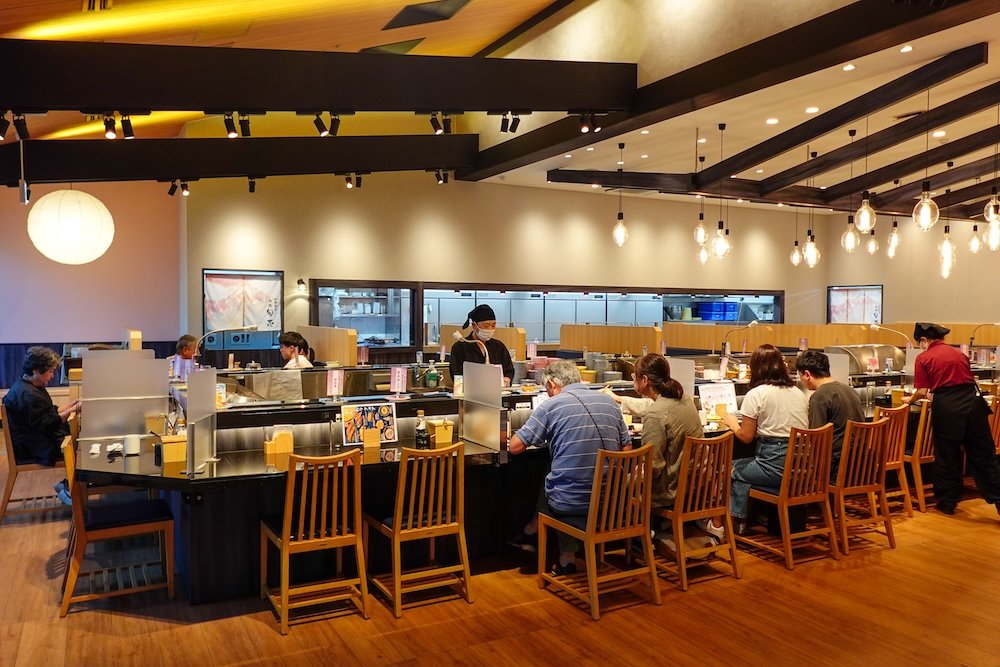
Savor Hakodate’s Culinary Delights
No visit to Hakodate is complete without diving into its incredible food scene. Known for its fresh seafood, the city offers everything from sushi and sashimi to unique local dishes like Hakodate salt ramen and ika meshi (stuffed squid). Start your day at the Hakodate Morning Market, where you can sample a variety of seafood delicacies. Don’t forget to stop by the famous Lucky Pierrot for a taste of their quirky and delicious burgers. Whether you’re dining at a local izakaya or indulging in a multi-course kaiseki meal, Hakodate’s cuisine will leave your taste buds craving more.
- Morning Market: Enjoy fresh seafood like uni (sea urchin) and ikura (salmon roe) rice bowls, or try the city’s famous squid dishes.
- Local Specialties: Sample Hakodate’s unique salt ramen, known for its light yet flavorful broth and simple toppings.
- Quirky Eats: Visit Lucky Pierrot for unconventional but delicious burgers, such as the Chinese Chicken Burger or Tonkatsu Pork Cutlet Burger.

Take in the Scenic Views
Hakodate is blessed with some of the most stunning vistas in Japan. The panoramic view from the top of Mount Hakodate is a must-see, especially at night when the city’s lights create a mesmerizing sight. For a different perspective, visit Goryokaku Tower, where you can look down on the star-shaped fort and its lush surroundings. The Hachiman Zaka Slope is another picturesque spot, offering a perfect photo opportunity with its view of the bay framed by sloping streets. Whether you’re enjoying the cityscape or the natural beauty of the coastline, Hakodate’s scenic spots will take your breath away.
- Mount Hakodate: Take the ropeway or hike to the top for one of Japan’s top three night views, offering a glittering panorama of the city.
- Goryokaku Tower: Get a bird’s-eye view of the unique star-shaped Goryokaku Fort, especially beautiful during cherry blossom season.
- Hachiman Zaka Slope: Capture the perfect shot of the bay and city skyline from this iconic slope, a favorite among photographers.
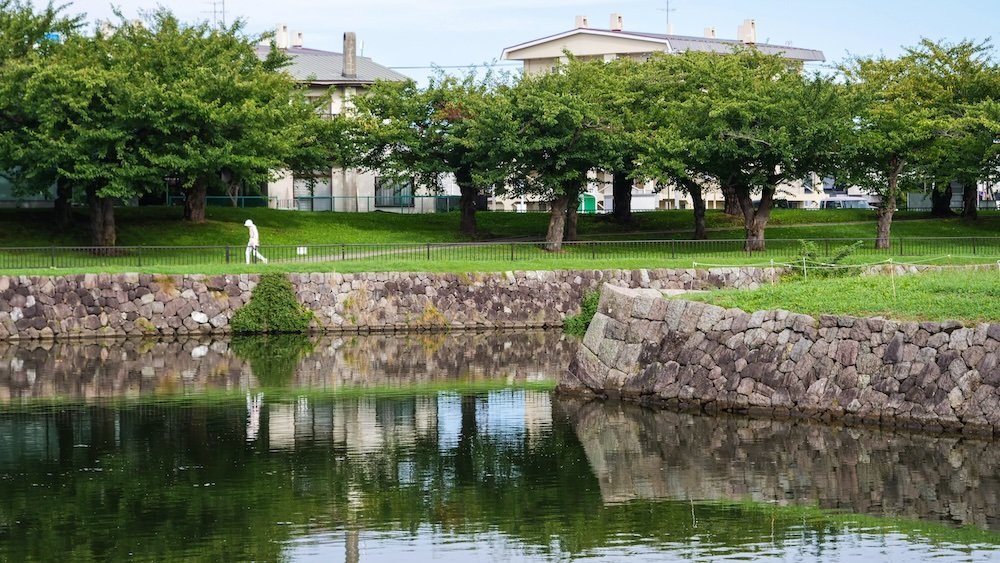
Explore the Surrounding Nature
Beyond the city itself, Hakodate is a gateway to some of Hokkaido’s most beautiful natural landscapes. Take a day trip to Onuma Quasi-National Park for a peaceful escape into nature, where you can enjoy boating, cycling, or simply strolling along the scenic paths. For something more adventurous, head to Mount Esan and hike up to see the active volcano and panoramic views of the coastline. The area around Yunokawa Onsen offers a chance to relax in hot springs with stunning views, making it a perfect retreat after a day of exploration.
- Onuma Quasi-National Park: Enjoy activities like hiking, cycling, and canoeing amidst the park’s serene lakes and forests.
- Mount Esan: Hike the trails of this active volcano for breathtaking views and a chance to see the dramatic volcanic landscape up close.
- Yunokawa Onsen: Soak in mineral-rich hot springs while enjoying views of the ocean—especially delightful during winter when snow falls softly around you.
Take your time to explore, savor the flavors, and enjoy the views—Hakodate is a destination that’s sure to leave you with wonderful memories and a longing to return.

Ode to Hakodate
In Hakodate’s embrace, where land meets sea, A city of charm and history, it beckons me. Mount Hakodate stands tall, offering a view, A panorama of beauty, a mesmerizing hue.
Stroll through Motomachi, with its European flair, Cobblestone streets, buildings with stories to share. Goryokaku’s star-shaped fort, a historic sight, Cherry blossoms bloom, painting the day and night.
Hakodate Morning Market, a bustling scene, Seafood delights, fresh and pristine. Taste the savory ikura, melt-in-your-mouth squid, A culinary journey, where flavors are bid.
Hakodate Bay’s allure, a waterfront delight, Kanemori Red Brick Warehouse, alive both day and night. As nightfall casts its spell, the city comes alive, Illuminated streets, a spectacle to thrive.
Beyond the city’s grasp, nature’s wonders await, Onuma Quasi-National Park, a tranquil landscape. Explore the lakes, the volcanic trails, Nature’s masterpiece, where peace prevails.
Hakodate, a city of contrasts, old and new, Where traditions thrive, with modernity in view. In hot springs’ embrace, find respite and ease, A moment of tranquility, a moment of peace.
From Hakodate to beyond, a journey to embark, Sapporo’s lively streets, Otaru’s canal’s spark. Hokkaido’s wonders, diverse and grand, In this captivating land, memories are planned.
So, traveler, embrace Hakodate’s allure, Immerse yourself in its stories, both past and future. Let the city’s spirit guide your way, In Hakodate’s embrace, may you find joy each day.
